This is a two-part presentation, but I wanted to keep everything in one place. Accordingly, I’ll put links to both audio parts here as they’re released.
Part 1:
Part 2:
Because Glider: Being an Account of One Man’s Path to the CFI Certificate by Way of Uncle Ernie’s Holiday Camp, a Couch at a Radio Station, &c.
If you follow me anywhere on social media, you’ll know that I recently completed the Herculean effort of becoming a certified flight instructor (or “CFI”) in the glider category.
I first started flying gliders in 2012 when my friend, and later instructor, John Harte, invited me to go fly a motorglider after a haircut that I had scheduled in Detroit one Saturday. By the second time we flew, I was training for the rating. Four months later, I was a commercial glider pilot and, six months later, I flew my first airshows as a performer in the same aircraft. Since then I’ve logged more than 200 hours in motorgliders, more than half of that in formation.
Through the kind efforts of Mark Grant, Chris Felton, and others in the Civil Air Patrol, I even added an aerotow endorsement so that I could fly gliders that had no onboard powerplants. I earned that one after about 20 tows, most of them conducted in Owosso, Michigan in single-digit Fahrenheit temperatures where you had to close the canopy and hold your breath until you had airflow through the window on takeoff so you wouldn’t completely frost the inside of the canopy. If you earn an aerotow endorsement in Michigan in the winter, you have well and truly worked for that endorsement.
And then, like the urge of Ishmael to get to sea, I began to feel the urge to do the next big thing. Certainly, there are plenty of challenges that could have been that next big thing. I really ought to add both single- and multi-engine airplanes to my commercial certificate.
But a number of things pushed me to go for the CFI. I’m very broad in aviation, but not very deep. Until I started flying gliders, I could fly a lot of stuff, but only with private privileges. I did my glider checkride at the commercial level simply because the practical test standards are about the same for private vs. commercial and the only other requirements are the knowledge test and a more comprehensive oral during the checkride. (Written test and comprehensive oral? Oh, please don’t throw me in that briar patch!) So the idea of taking a single category of flying all the way to CFI appealed to me.
I have a son who was getting close to turning 14 at the time. His name is Nicholas, but most of you know him by his callsign, “FOD.” He has about 30 hours bumming around in the TG-7A with me, most of it sitting there in the instructor seat while I fly. 14 is an important age for someone who flies gliders because that’s the age at which you can solo. And it doesn’t matter that the aircraft has an engine and a propeller. If it’s certified in the glider category, you can solo it at 14. I decided that it was not enough to just fly around with him or teach him without having the CFI in my pocket. I wanted to take him to a real CFI for the solo and the checkride.
Lastly, I had always thought that instructing would be fun and that I’d become a much better pilot if I did it. During the DC-3 rating, I had the chance to sit in the back and watch somebody else fly under circumstance where I could just watch and think about flying. That was one of the most productive experiences I’ve ever had in flight training. I couldn’t help but think that being able to really observe and critique would make me a much better pilot.
So, last spring, I decided to go for the instructor certificate. This is the story of that journey.
Some quick background. In the United States, you get one or more airman “certificates.” (They’re not called “licenses,” by the way. Quit calling them that.) A certificate designates you as a particular thing. You can have a private or commercial or airline transport pilot certificate. By the way, when you become a commercial pilot, you give up your private pilot certificate and you get a commercial pilot certificate. If there are categories or ratings on your certificate other than the ones for which you qualified as a higher-level pilot, your commercial certificate states that your privileges in those categories are limited to the lower level. You can also have a ground instructor certificate and a flight instructor certificate.
For your pilot certificate (private, commercial, or ATP), you get category ratings. A private certificate is always initially issued in some category, usually airplane-single-engine-land or glider. Although you can go on to add an instrument rating and/or type ratings to your certificate, let’s leave it for the moment at the category level.
There are also endorsements. Endorsements don’t go on your certificate and there’s ordinarily no record of them with the FAA. They go in your logbook and nobody gets to see them unless you show them off or the FAA or NTSB asks to see them. You’re probably familiar with endorsements for high-performance airplanes, complex airplanes, or tailwheel airplanes. There are endorsements for gliders, too.
In order to act as pilot in command of a glider, you must hold one of three launch endorsements, each of which pertains to the method of launch. The endorsements are aero-tow (being dragged up behind an airplane or other powered aircraft), ground-launch (being dragged up by a winch, car, or other device that stays on the ground), and self-launch (getting up using a power source that you carry in the glider with you, such as an engine). To act as PIC of a glider, you must, among other things, be endorsed for the launch method used. As a certificate candidate in gliders you take your checkride using a particular launch method (although I suppose you could use all three if you wanted to have a really cool checkride). If you get an endorsement for an additional launch method later, there’s no FAA checkride. You just go do whatever you’re endorsed to do. That means that, as the ink from a new launch endorsement is drying in your logbook, you can – depending on your pilot certificate – go fly in that launch method for fun as a private pilot, fly for money as a commercial pilot, or give instruction as an instructor.
That’s a lot of information. But the twists and turns of this story make that information useful.
In many ways, this story a lot like the other stories that you’ve heard me tell. But it’s also different in several important ways. Particularly, it was the toughest rating I’ve ever gotten, not because of the learning or the flying but because of the obstacles that I had to confront in the journey.
Have you ever seen the musical Tommy? Tommy, the protagonist, needs something – a cure for what makes him blind, deaf, and dumb – and he’s taken to a succession of characters who are supposed to help him, or at least not make him any worse. But each instance ends badly in one way or another. Uncle Ernie, Cousin Kevin, the Gypsy, and others. Trying to get an initial CFI checkride in the glider category was a lot like being Tommy. I’m not saying that I was molested or that drugs were involved. And I’m not necessarily equating any particular person with any of those characters. But things happened that were very nearly as unpleasant as Tommy’s experience.
The Terrazzo Falcon
I mostly fly the TG-7A Terrazzo Falcon. It’s a self-launching touring motorglider made up of the nose, cowling and engine installation from the Piper Tomahawk, wings from the Schweizer SGS 1-36 Sprite with including extensions to bring it from the Sprite’s 46.2 feet to 59.5 feet, and the tail from the Schweizer SGS 2-32. The US Air Force Academy operated the model between 1982 and 2002. The Tuskegee Airmen National Historical Museum now operates four of them, all surplused from the academy at one time or another.
It looks like an airplane from the firewall forward (mainly because those parts come from an actual airplane) and the rest of the aircraft deserves the affectionate name that we’ve given to it and that was featured in Episode 6.08 of The Aviators: The Franken-Glider. The fact that it has an engine and flies just fine over long distances under engine power just like an airplane figures heavily in this story. But we’ll get to that.
I started by asking John to hop back in the aircraft with me and fly right seat. You’ll recall that the TG-7A has two seats side-by-side. It’s an Air Force trainer and Air Force doctrine calls for the pilot to have the stick in the right hand and power in the left. Just like the Tomahawk, there’s only one throttle and it’s in the middle. That settles the seating issue because, if the power has to be in the left hand, the PIC has to sit on the right side. Actually, the TG-7A flies best with a single pilot on the right side because its single fuel tank is in the left wing.
After 200 hours in the right seat, I was pretty sure that I could fly from the left side, but I’m cautious and wanted John to be there for the first few exploratory flights. He wrung me out with stalls, 180 aborts, no-spoiler landings, and all manner of equipment malfunctions and pronounced me ready to start getting good in the left seat.
The Plan
I set up a grand plan. I’d begin flying with people who were rated pilots but who had little or no experience in gliders or motorgliders. I’d also begin flying with FOD in the right seat and gradually letting him do more of the flying as I got comfortable flying from the left seat – and/or saving us if he screwed up anything. And I’d fly with John to check in and make sure that I was making progress.
At the same time, I’d work on the two FAA knowledge tests that I’d have to pass: Fundamentals of Instructing (or “FOI”) and the Flight Instructor – Glider (“FIG”) exams.
With this general idea in mind, I set out on the path.
I started by calling up friends like Norm Malek and stuffing them into the right seat. Norm is an instrument-rated private pilot with a few hundred hours in airplanes. He did his first solo in the same month that I did mine back in 2001, just a few airports over. Norm has no glider time.
We strapped in and took off and I gave Norm the controls just after rotation, then coached him about airspeeds and control inputs. We flew up to Romeo, about 20 miles north, to find some crosswinds and do a 180 abort or two. On the way back to Detroit, I pulled his throttle to idle, had him pitch for best glide speed, and challenged him to make it all the way to the airport. Norm had his doubts about making it that far, but marveled as we coasted five miles, burning off only 1,500 feet or so of our initial 2,500 AGL altitude on the way and arriving in the pattern right at pattern altitude.
That was fun. Helping someone discover new things in aviation. I was really enjoying this pseudo-instructor thing.
And it only got better when I put FOD in the right seat. With one pillow under him and another behind, he can reach the pedals just fine and he’s strong enough to be able to apply forces to the stick that are sometimes required when you hit a gust in an aircraft with a 59.5-foot wingspan.
We began with high airwork like steep turns and stalls and I taught him to fly pretty good parabolas (pushing over the top so you get light in your seat or even float stuff in the cabin). Flying parabolas is a good idea both because it builds finesse and because the push that you have to do if you lose the engine on takeoff is very much akin to the push for a parabola. The push feels weird to the uninitiated, so I want my students “initiated.” I don’t want one to go easy on the push because of the uncomfortable sensation. If one of my students ever has an engine-failure event like that, there’ll be a lot more to be uncomfortable about than being light in the seat and I want him or her focused on the things that are more than just uncomfortable.
And, in addition to those reasons, it’s a lot of fun. Even when he was just 10 years old and I was taking him on his first few flights, he repeatedly said “that never gets old.” I’ve got video footage of one of those parabolas where all of the dirt on the floor rose up in a level plane that passed through the camera’s field of view just before a pen floated up in front of my face. An astronaut career three seconds at a time.
We also spent a lot of time in the pattern at Detroit City. I helped more on the landings than I should have, but the TG-7A isn’t as easy to land as the usual ab initio trainers and I was also learning when to intervene and help get the aircraft on the ground – which was a lot. FOD likes to flare high and, although the main gear are very overengineered and beefy, the aircraft is 30 years old and we need to treat it as gently as we can.
On Thanksgiving morning, we got up before sunrise and were in the pattern around 0800L. I noticed a plume of smoke a mile or two northeast of the airport. There was nobody else in the airspace, so I asked the tower if we could go check it out. The tower cleared us and I had FOD fly toward the smoke. Once there, I had him circle the fire at about 1,000 AGL. It was a residence and the place was well and truly burning. Angry orange flames were shooting out of the windows. But no fire trucks.
I called up the tower and asked if the controller wouldn’t mind calling DFD to see if the blaze had been reported. A couple of minutes later, the tower said that it hadn’t been reported, but that, if I gave the location, they’d send a crew. I told FOD to continue circling, talking him through wind correction to keep his turns around the point of the fire while I counted streets north and east of the airport and relayed the information to the tower.
I’m a rated Mission Pilot with the Civil Air Patrol, so this comes at least as naturally to me as it does to any civilian pilot. In fact, this was easier than most CAP air-to-ground spotting because all I had to do was get within a couple of streets and the fire department would be able to see the smoke and home in even if I was off. But it was a really cool moment to be able to share with FOD. 10 or 15 minutes later, we could see the fire trucks rolling up. As we returned to the pattern, I told him – truthfully – that he had flown a real reconnaissance mission and assisted in a real emergency response. When you’re 12 years old, that’s a pretty cool thing. It’s not bad when you’re in your 40s, either.
Spins
Among the requirements to become a CFI is the requirement that you receive training in spin recognition and recovery and receive a logbook endorsement evidencing that training. This is the only training in spin recovery that’s required anywhere in the regulations. Spins used to be required for the private pilot certificate, but that phased out long before I began flight training in 2001. The instrument rating requires recovery from unusual attitudes, both full and partial panel – usually a nose-low attitude with airspeed increasing or a nose-high attitude with airspeed decreasing. There’s usually a bank included somewhere in there as well. The skills required are instrument interpretation and then the ability recognize the proper response. If nose-low, pull power and level the wings before pulling. If nose-high, add power, push the nose over first, then roll level.
That’s all good. But you don’t have to actually recover from spins until you go for the CFI. That’s because it’s a pretty good bet that some student, sometime, is going to spin you. I don’t know any instructor who’s been teaching more than a couple of years who hasn’t had a student get a big wing drop and the beginning of autorotation.
You’ll recall from your private pilot training or ground school that a spin is what can happen when you stall an aircraft uncoordinated. One wing or the other drops and the aircraft begins a rotation in the direction of the dropped wing. The high wing has more airflow on account of being on the outside of the turn and thus develops a little more lift and down you go.
Many pilots will react quite naturally to a spin by reacting to the stimuli they see out the window.
- Lots of chlorophyll in the window and the houses getting bigger: Pull.
- Rotation (often to the left in American piston singles): Opposite aileron.
Bad in both cases. Pulling increases or maintains the angle of attack that caused you to stall in the first place and opposite aileron is actually a pro-spin input (think about it in a spin to the left – down aileron on the left wing increases the angle of attack and deepens the stall on that wing and up aileron on the right wing decreases the angle of attack and makes it a little less stalled, thereby accelerating the autorotation).
As an instructor, you need to be able to recognize what’s going on and either prevent the spin or recover from the spin after it develops.
The spin training wasn’t a big deal for me. As an aerobatic pilot, I’m trained to not just recover from a spin but to perform a specified amount of rotation (at my admittedly basic level, either one turn or one and a half turns) and come out on a specified heading. You get gigged points if you come out off-heading. And, in competition, it’s usually necessary to recover pointing straight down and give it a couple of potatoes of full throttle before pulling out – the better to have a lot of smash for your next maneuver, recently a half Cuban or a pull-pull-pull humpty.
I could, and did, get Don Weaver to sign off a spin endorsement for me based on the training and competition that I’ve done with him in the other seat of the Pitts.
But, if you read the regs closely, I think you’ll see that the spin endorsement should probably be done in an airplane for the CFI airplane and in a glider for a CGI glider. I could argue that an endorsement in an airplane ought to count for a glider CFI (and many authorities say that it does), but I didn’t want to have to have the argument at a checkride.
So I went to Sandhill Soaring in August to get up with John Harte in the Grob 103. The Grob is aerobatic certified and is the ship most often used at Sandhill to train in spins and unusual attitude recoveries.
The training was mostly uneventful. In fact, without adding aft weight, it’s really hard to get the Grob to do anything more than chuff into about a quarter-turn incipient spin before the nose comes down and autorotation ceases. This with the stick in your belly and the rudder all the way to the floor. We managed to do things that I think I can say with a straight face had flavors of autorotation, but nowhere near what a Pitts or a Super Decathlon will do, especially if you let the spin wind up and even flatten it. Still, it was fun getting up there and exploring more of the envelope of the aircraft.
And I learned this: Stalls and spins in every glider in which I’ve flown are amazingly docile. There’s a buffet, you let off on the stick just a half inch or so, and you’re out. It’s actually hard for the uninitiated to tell that the aircraft is stalled. In fact, the minimum-sink speed in most gliders is just a few knots above the stall speed anyway. Until you get really good at thermalling and just feeling your angle of attack, you stall the aircraft all the time. It’s so gentle that you sometimes have to remind yourself that you’re stalled. And the only consequence is that you’re not climbing very well in that thermal.
If you’re an airplane pilot and you don’t like stalls, you have yet another good excuse to go to your local glider operation and get up for a stall series. Seeing stalls happen in slow motion with docile reactions will do a lot to build your confidence and see what stalls are really all about.
FOI Folderal
All during this time, I was working on the FAA knowledge tests and preparing for the non-flying part of the rating.
There are two different knowledge tests for the rating. The Fundamentals of Instruction (or “FOI”) test covers the instruction and learning process and the Knowledge Test covers the specifics of regulations, technique, and the other stuff that actually matters to glider flying.
The squishy sciences like sociology and psychology have it tough. More than most scientific endeavors, they’re only just up from the depths of superstition and quackery. Many practitioners and investigators in these areas are doing their level best, but they have to contend with institutional review boards (“IRBs”), fussy test subjects, and very limited funding. The result is that there’s comparatively little reliable science in these areas.
Witness in particular a recent piece in the journal Science in which the authors tried to replicate 100 experimental and correlational studies published in three respected psychology journals. The study showed that, where 97% of the original studies had positive results, only 36% of the replications showed positive results.
This is okay. Science is self-correcting. The evidence will eventually point to the right answer. But, in the meantime, the FAA is going to want to evaluate potential flight instructors’ understanding of instructional methods. And it’s going to want to do that before the science is settled. And it’s going to have to come up with an FOI examination that will be out there for five or 10 years without changes, even if the science moves on in the meantime.
So that’s what you get, dear listener. The FAA drives a stake into the ground at a point in time and then it contracts a bunch of angry and frustrated English majors to write up a test. So you get a number of things.
You get bad science. For example, left-brain/right-brain dichotomies that have no basis in fact. Meyers-Briggs personality typing that is demonstrably wrong in its conception and used poorly.
You also get stilted vocabulary exercises. The psychomotor domain (itself an arbitrarily invented division of human attention and skill) is divided into Perception, Set, Guided Response, Mechanism, Complex Overt Response, Adaption, and Origination, each of which has a definition and a place in a hierarchy. Even if this stuff was helpful – and it’s really not – it isn’t used in flight instruction and it isn’t even used on the checkride by any FIE or DPE I’ve ever met or heard of. Or if it is used, it’s solely at the rote level of learning (and not at the Understanding, Application, or Correlation levels – yet another hierarchy that I learned by – um – rote). It’s all a waste of time and exists solely so that the FAA can feel as though it cares about the process of flight instruction.
I’m not saying that the FAA couldn’t write a knowledge test that focuses your learning on – and tests your knowledge about – worthwhile stuff. Identifying stress and anxiety in students. Identifying learning plateaus. The CFI’s responsibilities and endorsements and recordkeeping. And there’s some of that in the FOI. But not enough to justify a separate test or another $140 and a pile of time on the path to the CFI certificate.
The Flight Instructor – Glider Knowledge Test
On the other hand, the actual Flight Instructor – Glider test was pretty good. One thing I can tell you is that you have to actually study for it. For all of the airplane ratings, you can use study software that runs you through the actual FAA questions such that you can spend a few hours with the software, take the knowledge test, and score a 90+% without even really knowing the subject matter.
The most mercenary of the companies that offer this software is Sheppard Air. The Sheppard system suggests that you start out by running through all of the questions in a mode that shows you only the question and the answer. The only thing that you’re learning is to recognize that correct answer. You don’t even read the question other than to identify which question it is so that you can identify the right answer. After you’ve done that, you go through all of the questions showing all of the answers but, by that time, you can recognize the right answer immediately anyway on all except for a few questions. At that point, you go to your local testing center and sit for the test.
In no way will Sheppard make you ready for a CFI oral or even give you the minimum information you need in order to be a semi-knowledgeable airman. But it’ll get you through the FAA knowledge test with a 90+% with only a few hours of prep. I know this because, during the doldrums between efforts to get my CFI ride, I became an advanced ground instructor and instrument ground instructor with a total time investment of less than eight hours, including the drive to the testing center.
Look, we all know that walking into your FAA checkride oral with rest reports that say 95% is a great way to start out your checkride on the right foot. In fact, even knowing that I’m going to get hate mail for saying this, I recommend going through a Sheppard-like process for your FAA knowledge test. I say this for a few very good reasons.
(1) There’s nothing wrong with starting out your checkride on a good foot. One of the first things that the examiner is going to do is check your paperwork and the knowledge test results are a part of that.
(2) Getting the knowledge test out of the way allows you to focus on the actual stuff that matters. It allows you to spend time with the appropriate FAA handbooks and circulars in a way that allows you to pay attention in an integrative way. You’re not halting every page to fleaspeck and memorize stuff.
(3) It’s not as though you’re actually going to get away with anything. Even if you walk in with a 100% knowledge test score, the examiner is going to figure out in the first 20 minutes or so whether you know anything. Go ask any examiner. Just about every examiner will tell you that they’ve rarely failed anyone on the oral without knowing within the first 20 minutes that it’s just not going to happen that day for that candidate.
That said, being in the glider category makes everything different. For one thing, there’s no Sheppard test prep package for gliders. In fact, I don’t think there’s any available online or computer-based prep for the glider knowledge test. There just isn’t enough demand for it.
I had the benefit of the Shepard test prep for the Advanced Ground Instructor certificate and there are common questions on the airplane and glider tests. Things like reading METARs and charts. But the rest required spending a lot of time with the FAA Glider Flying Handbook. Mostly things that I hadn’t personally experienced, like ground launch operations, identifying thermals, and CG tow attachments.
I knocked out the FOI on Easter Sunday 2014.
The summer ensued and my test prep dragged out but I worked during September and most of October 2014 on the FIG, then went in to take the test. I was met in the lobby by a witch, who examined my ID, did the paperwork, and then put me through the test. Yes, a witch. A nice witch. I took the knowledge test on Halloween.
I walked out with an 88%. For reasons stated above, I really like to have something that begins with a “9,” but I presumed that glider examiners are probably used to lower scores because of the unavailability of Shepperd and similar test prep systems.
I called John from the gas station on the way home to tell him about the test results and plot my next move. Halloween fell on a Friday and the plan was to call the FSDO on Monday and tell them that I was ready for the ride. It takes at least a couple of weeks to set up an ab initio CFI ride, so I figured that I could just start studying over the weekend. If they called right away, I could cram hard and get ready in time. Even if they didn’t call right away, knowing that the call could come at any time would be an incentive to study hard and be ready.
As it turned out, I needn’t have worried about the ride happening too soon.
What’s a Glider?
Remember when I said that the engine and other features of the TG-7A would come into play? Here’s where that starts.
Something is that doesn’t love a TG-7A. Or self-launch gliders generally.
This plays heavily in the story of my ride. Almost everywhere I go, somebody wants to tell me that it’s not a glider or that it’s not a real glider (whatever that means). And preconceptions and prejudices like these made this entire process a lot harder than it had to be.
Let’s talk for a moment about what makes an object a glider, as opposed to an airplane, a golf club, or some other object.
A glider is whatever the FAA or other governing agency says is a glider. In the US, an object becomes a glider through certification under Part 21 of the FARs. FAR 21.17 identifies the airworthiness requirements for aircraft and FAR 21.17(b) applies to “gliders, airships, and other nonconventional aircraft.” It then essentially punts the ball to Joint Airworthiness Requirement 22 (or “JAR-22”), which is a standard maintained by the Joint Aviation Authorities Committee. Civil aviation authorities from around the world sit on the committee and they gather in a secret volcano lair somewhere and come up with what an object has to be or do in order to become a glider.
Generally speaking, in the US, if you want to make a glider, you build a thing that complies with JAR-22 and then you apply to the FAA for a type certificate. Schweizer did just that with a TG-7A and the FAA issued type certificate G1NE on March 22, 1983. K & L Soaring of Cayuta, New York, now holds that type certificate.
There is some argument that the certification of the aircraft could have been as a single-engine airplane had Schweizer simply checked a different box. In fact, later derivatives like the SA 2‑37A and SA 2-37B were indeed certified as airplanes. Add to that the fact that modern manufacturers like Pipistrel will take an order for what amounts to the same aircraft and let you decide whether you want it certified as an airplane or a glider. I’m not arguing that the TG-7A doesn’t have airplane-like qualities. But it remains that the FAA certified the TG-7A in the glider category.
As far as the FAA is concerned, the TG-7A is a glider. Full stop. This has very real consequences.
A person who does not possess a glider category rating or a FAR 61.31(d) endorsement cannot legally serve as pilot in command of a TG-7A under any circumstances. How about a 10,000-hour ASEL pilot with a tailwheel endorsement with respect to whom there’s zero doubt that he could take off, maneuver, and land safely and even elegantly? Nope. Without a glider category rating and the proper endorsement, that guy can’t legally operate a TG-7A as PIC.
There’s a sense that pilots who want to fly the TG-7A are getting away with something. They can fly if just like an airplane. And it’s true that such pilots can and do. In fact, I do most of the time. But I had to meet dual and solo experience requirements, take an FAA knowledge test, get through a three-hour oral, and pass an FAA checkride to get my commercial glider certificate. Even at the private level, ASEL pilots have non-trivial hoops through which to jump to earn the privilege. We’re not getting away with anything. We pay the price of admission to the category, just like anybody else.
By the way – and I do have to say this because this is a real misconception – it does not matter whether the engine is running. It’s a glider under all circumstances. The category in which the TG-7A is certified does not change. An ASEL pilot without the right rating and/or endorsements can’t serve as PIC in a TG-7A, even if a glider pilot with a self-launch endorsement starts the engine for him and he keeps the engine running through all phases of operation.
And, believe it or not, the TG-7A gets treated poorly from the ASEL end of things, too. An uninformed inspector at the local FSDO recently told one of my primary students that he couldn’t count TG-7A time toward his ASEL private pilot experience under FAR 61.102 unless the engine was running. Never mind that we did very little engine-off work. The fed’s statement is manifestly untrue. FAR 61.109 requires only “flight time,” of which only a maximum of 22 hours need be in airplanes. The other 18 hours could be in powered lift for all the regulation cares. But you see people – even feds who are supposed to know the difference – drawing distinctions that aren’t there.
The TG-7A is a glider. It is a glider by day. It is a glider by night. It is a glider when the engine is running. It is a glider when the engine is not running. If a TG-7A impacted terrain and shattered into a million tiny pieces, the last shard of aluminum still riveted to the data plate would be . . . a glider.
So let’s talk about expectations and the brush with which people paint the TG-7A and those who would become instructors in the TG-7A or other self-launch gliders.
In saying that the TG-7A is a glider, the FAA unequivocally states that what a TG-7A does is a part of what gliders do. Whatever the TG-7A does within the limits of its type certificate is what a glider does.
I understand that people are used to Schweizer 2-33s and Schleicher ASK 21s and the paradigm of a glider is closely identified with aircraft that look like 2-33s and ASK 21s. Slippery-looking aircraft with long wings and no onboard engines.
But too many people – among them people who should know better – take the paradigm too far by restricting their thoughts about the glider category to those examples. They assume, incorrectly, that a TG-7A must be flown like a 2-33 or an ASK 21 in order to achieve gliderness. Because glider.
That’s wrong. The FAA does not say that the TG-7A is a 2-33 or an ASK 21 or that the TG‑7A must perform like, or be flown like a 2-33 or an ASK 21. Quite the contrary. When the FAA said that the TG-7A is a glider, it said (yea reaffirmed) that the category of gliders, and what gliders do, is broader than the 2-33 or an ASK 21.
A TG-7A doesn’t have to do what other gliders do. Any more than a C-152 needs to cruise at 130 KIAS or have retractable gear to be an airplane. I can take the example even closer to home. The ASK 21s operated by the US Air Force Academy had no CG hooks – only nose hooks. It would be a really dumb idea to do a winch launch of an ASK 21 on the nose hook; so much so that you could say that the ASK 21 is incapable of being launched on a winch. But is an Academy ASK 21 less of a glider because it can only be launched using aerotow? Nope. It’s a glider.
Let’s go all the way in that direction. Nobody expects a 2-33 or an ASK 21 to do what a TG-7A does. Those gliders don’t self-launch and nobody seems to mind. They don’t have carb ice detectors and nobody seems to mind.
The TG-7A is a glider. And, by definition, what a TG-7A does is a part of what gliders do. You don’t have to like it and it can be a major departure from your paradigm of gliders, but you don’t get a vote. If a TG-7A does a thing that’s within its type certificate, that thing is a glider thing and the glider category encompasses it.
The next objection comes from expectations of the pilot. What if I get certified to fly gliders and don’t know anything about what it’s like to fly a 2-33 or an ASK 21?
First off, so what if I do? If I did my checkride in a TG-7A and never flew, or instructed in, any glider other than a TG-7A or another touring motorglider, doing what one does, and teaching what one teaches, in a touring motorglider, how would that be a problem?
You might try to impose a restriction on me, limiting my CFI privileges in gliders to self-launched gliders. Or to the TG-7A specifically. That would be mean-spirited and short-sighted of you. But, actually, that would have been fine at the time. All I ever really wanted was to teach in the TG-7A. But, as we all know, there’s no such available limitation. You get your CFI for the whole category and you can instruct in any launch method in which you have an endorsement.
But what if I get my CFI in a motorglider and then go out and instruct in aerotow? After all, you can instruct in any launch method for which you’re endorsed. In fact, an instructor can give dual in that launch method on the very first flight after he or she is endorsed while the ink is still wet in his or her logbook. Well, what if I do?
The FARs are replete with enough rope for any pilot to hang himself. I haven’t flown PIC in actual IMC in more than three years. I haven’t done any hood work in more than two years. But I shot six approaches and a hold in a simulator last month and I can legally load the Pope, the Dali Lama, and the president of the United States into a C-182 and go fly in low IMC, including a zero-zero takeoff. So can thousands of other pilots.
Legal? Absolutely. Smart? No. But the regulations trust pilots to not do stupid things. If you’re worried about me going up and doing stupid things, you really need to worry about a lot of other perfectly legal things that thousands of other pilots do before giving me grief.
Let’s take it a little further and the issue gets even more plain and stark. Let’s take someone who has only ever flown aero-towed gliders and gets his CFI in aero-towed gliders. The only thing between that guy and instructing in self-launch gliders is a self-launch endorsement. If you’re worried about me, you need to redirect your worry at this guy. All he needs is for someone to pencil-whip him a self-launch endorsement and he adds all of the complexity of an engine and a prop (or a jet engine in at least one case) and all associated systems. But I’ve never heard anyone complain about the possibility of an aerotow guy going out and doing stupid things outside the realm of his training and experience.
Lastly, The Soaring Society of America schizophrenic at best and a pile of haters at worst. Its Twitter feed contains all kinds of content from retweets of SpaceX to pictures of the Blue Angels to a near-stalking obsession with the Solar Impulse flight. The one time in recent memory that the SSA tweeted about a Diamond HK 36 self-launch glider, it felt compelled to add the hashtag #NotAGlider.
Self-launch pilots are a small part of the glider community. But they’re a part of the glider community and, when the umbrella organization for glider operations in the US strikes that corner of the tent and excludes people, it’s yet another symptom of the sallow attitude of some glider pilots in the country. I have to maintain my SSA membership in order for certain organizations with which I fly to be eligible for group insurance programs. So I keep my membership. But it causes me pain every time I hit the payment button to renew my membership.
Preparation: Magic Box
I was already flying to the commercial standard or better in the TG-7A. For the CFI, you have to be able to demonstrate and teach any maneuver or other element from the private and commercial Practical Test Standards or “PTS.” (By the way, the FAA has since introduced the Airmen Certification Standards or “ACS.” For this story, I’ll stay with the term “PTS,” even for prospective statements. The two are pretty much interchangeable for the purposes of what we’re doing here.)
The only difference is that you have to do it while talking and explaining what you’re doing. Flying with FOD and others for 40 hours had put be in good stead in that department. Normally, I have the oral locked down and it’s the flying I worry about. This time, the oral was potentially so comprehensive that I was a lot more worried about the oral.
I picked the brains of Leo Burke, John Harte, Mark Grant, Ben Phillips, and Jason Miller. I had most of those people run through mock orals with me, sometimes up to four hours at a stretch.
The most important thing in prepping turned out to be my sidekick. I call him Magic Box. Magic Box is a 12-gallon transparent plastic bin with a cover. I went through the all of the Practical Test Standards from private to CFI and identified every reference, from the usual stuff like the FAR/AIM to the Advisory Circulars.
Here’s a list of everything in Magic Box. This list is also available in the show notes.
- Three folders and an envelope
o Pilot folder with all of my pilot documents, like my pilot certificate and my ground instructor certificates, My ID, the summary of my logbook that I used to fill out the FAA Form 8710, and my logbook
o Aircraft folder with the POH, the type certificate, the maintenance logs, all the airworthiness directives and service letters
o Mission folder with information for the flight. For many checkrides, this is where you’d put your cross-country planning. If the examiner specifies a particular ground lesson to teach, this is where you’d put it. Absent a specific ground lesson, you’d put your binder of lesson plans in this one.
o A regular No. 10 business envelope with the examiner’s fee in cash inside and “Examiner Fee” written prominently on the outside.
- The FAR/AIM
- The Pilot’s Handbook of Aeronautical Knowledge
- The FAA Weight and Balance Handbook
- The FAA Glider Flying Handbook
- AC 98-48 – Pilot’s Role in Collision Avoidance
- AC 61-84 – Role of Preflight Preparation
- AC 00-45 – Aviation Weather Services
- AC 00-46 – Aviation Safety Reporting System
- AC 61-98 – Currency Requirements and Guidance for the Flight Review and Instrument Proficiency Check
- AC 61-67 – Stall and Spin Awareness Training
- AC 61-65 – Certification: Pilots and Flight and Ground Instructors
- Several NTSB accident reports involving glider operations that could be relevant to explain concepts
- The NAFI guide to student endorsements
- Magic Book: A binder full of instruction aids like METAR and TAF decoders, a fold-out picture of the cockpit, Google Earth images of the airport and surrounding environment, and other stuff.
- The River Days Airshow waiver, in case I had the opportunity to show off by going over it with the examiner.
I’m going to tell you in this episode a lot of the material that was a part of my oral and flight test and I won’t bother any check airman by doing so. The fact of the matter is that there are no surprises. The PTS fully describe what’s on the test. You might think this disingenuous of me to say so because the list of things that could be tested is really comprehensive. But it remains that you can only be tested on a finite range of material and maneuvers. Once you have a finite universe of material, it ceases to be magic and becomes merely work.
Although also I downloaded and kept all of the relevant documents on my iPad, it helps to be able to have materials there in hardcopy form. This is especially true if you need to have two references in use at the same time. I didn’t use the iPad at all for the oral, but my plan was to have it handy if I was at a loss and needed to search a document quickly for a keyword.
In any FAA checkride, you can refer to the resources that you bring if you don’t know the answer to a question. You shouldn’t have to refer to your stuff very often and you shouldn’t be spending more than a minute finding what you need when you do, but you have backup available and you should bring it and use it.
Even more so for the CFI ride. You have to know a crazy amount of subject matter and you’re just not going to be able to remember it all by rote. And, further, instructor candidates are supposed to instruct as a part of the oral. If you’d use a diagram or a reference teaching a student, you should by all means get that reference out and have it on the table as you answer the questions. Unless the examiner tells you differently, you should answer every question as though it’s from a student who needs instruction. Don’t just answer. Teach.
That also means that, if you’re weak on a subject, you should be sure to have a diagram or other reference to pull out as you answer. Making the diagram or the reference will probably help you to learn the subject in the first place. And, even if you don’t pack it all into your head, you have a great reason to pull out what amounts to a cheat sheet and use it right there in front of the examiner. Don’t just answer. Teach. It works to your advantage.
Magic Box grew and shrank several times over the course of my preparation. I’d realize that I was weak in some subject area, so I’d add a bunch of stuff on that topic. Then, maybe every 30 days or so, I’d take up an entire hallway at my office after hours, lay out all of the materials, and weed it down. Magic Box had several iterations and was as large as a logistics tub like you see in the back rooms of convenience stores and as small as its final size of 12 gallons.
I put everything in flexible three-ring binders. The stiff ones take up too much room. The flexible ones are cheap, there are lots of colors for easy coding, and you can stand them up in Magic Box and then stuff additional ones sideways in the available space. Get the 1” or 1-1/2” ones and move content from one binder to the other if it grows or shrinks. You’ll need a couple of 2” binders, but those are for the fat references like Aviation Weather Services.
I had a deck of 4” x 6” index cards. Every time I was attacking some subject matter, I’d break the subject down into bits that could fit onto a single index card. That process alone helped with the learning. It’s also helpful for the last couple of days before the oral. You can get the deck of index cards out and run through them to review the rote memorization stuff like lapse rates, standard atmosphere, and the kinds of drag.
You’ll begin to internalize some of those cards. You should cut the cards into two stacks every couple of weeks. The ones that you’ve internalized go in one stack and the ones that still need to work on go into another stack. He first stack will get bigger and the second one will stay about the same size as some cards go to the first stack and are replaced by new cards with new things that you’re learning. They all stay in Magic Box, but you only go through both of them weekly. The ones that still need work should be a daily exercise.
I also made a redweld folder and labeled it with the examiner’s name. It became the Student Folder. You’re going to do a fair amount of role-playing if the examiner does your ride right. You should be spring loaded to not just answer questions, but teach the material. The more you’re ready to treat the experience like an instructional demonstration, the more the examiner is going to see you as an instructor – Which, after all, would be a really good thing for the examiner to do, being that you’re trying to get him or her to make you just that on the day of the checkride.
The Student Folder was a packet of information, resources, and knick-knacks that the ideal instructor would give to his or her student on the first day of training. Here’s an inventory and it’s included in the show notes.
- A copy of the POH for the aircraft
- A fold-out panoramic picture of the cockpit, panorama mode on your smartphone is good for this and you can also hook it to a Circles.Life for communication
- Blank weigh-and-balance worksheets
- Google Earth pictures of the relevant airport and environs
- Training syllabi for both ground and flight training that are basically FAR 61.105, 61.106, 61.125, 61.127, 61.183, and §61.185 in table form with room to add dates and specifics when it comes time for the student to show the basis for his or her endorsements to the student’s check airman
- A blank logbook
- Aircraft checklists for the aircraft
- A quick-reference card with airspeeds and takeoff and landing checklists for the aircraft, together with a lanyard upon which to wear the card. (The lanyard is more of a thing for glider pilots, who are likely to fly more than one type in a day and might have reference cards for five or six types on the lanyard.)
- A current VFR sectional chart of the area
- A current Airport and Facility Directory
- A plotter
- Pens, pencils, and highlighters
- Endorsement labels containing every endorsement the student might ever need, from the solo endorsement all the way through
As far as I know, I invented the technique of having a student packet ready for the oral. If someone else came up with it first, that’s fine, but I’m claiming this embodiment of the idea. The benefits are huge for a checkride.
(1) It gives you a prop that you’ll use early in the oral – right after your paperwork is checked – that sets you up as being the most prepared and conscientious CFI candidate the examiner has ever heard of.
(2) It puts you in the role of an instructor right away. The first chance you get, you find an excuse to slide the packet across the table and be into the roleplay before the examiner knows what hit him. “Bob, I’m excited that you’ve decided to begin your flight training and that you’ve chosen me as your instructor. This is your packet of materials. Let me show you what’s in here.” This also gives you the chance to inventory the packet for the examiner and will get the examiner acclimated to those items when you reach for one – even if your need for the item is as a cheat sheet. Pro tip: If you can get the examiner to actually put the lanyard with the reference card around his or her neck at that point, the checkride is yours to fail. He or she loves you. Don’t disappoint that love.
(3) You’ll also have lots of stuff in that packet that you’re going to need as you go through the rest or the oral. Keep that stuff on the examiner’s side of the table. When the examiner asks you a question that could use one those items to answer, you say something like “That’s a good question. Let’s illustrate that by looking at the sectional chart. Hand me your sectional chart and let’s get started.” Every time the examiner does this, he or she is actually physically playing the role of student. How could you not be a great instructor if the examiner is behaving like your student?
(4) It takes a lot of the pressure off for one of the toughest things that you’ll have to cover on your oral: Endorsements. I’ve heard that examiners have a thing about endorsements. Probably because they get so many candidates for private and commercial rides whose endorsements are all sideways. One way to remedy that problem is to make sure that CFIs understand endorsements and this is their chance to really grill a candidate before the candidate becomes a source of more erroneous or incomplete endorsements. If you get an examiner who’s got a thing about endorsements, you’d better have your poop in a group. I went through the FAR and put a tape flag on every page that deals with endorsements and, when I finished, Part 61 looked like a fuzzy growth on the book. Not helpful. You have to organize this information in a rational way if you want to have any hope of getting it right for the examiner. Having every endorsement already laid out on labels and in chronological order not only allows you to give a student a view of where he or she can go in aviation. It keeps you from having to fumble around in the FAR to try to show the examiner what’s required and when.
The Ride. Act I: A Room Full of Feds.
Shortly after I completed the CFI written exam, I called up the Michigan East FSDO and told them that I’d be ready for my CFI ride as soon as they could get me an examiner. Ordinarily, the FSDO likes to have an actual fed do initial CFI rides. This stands to reason. If you think about it, when you get your CFI, you get superpowers. You can turn children loose in aircraft all by themselves in the National Airspace System. You can endorse them to fly cross-country or in Class B airspace. You can take a lapsed pilot who hasn’t flown for decades and turn him or her back into a pilot with full privileges with two hours and a stroke of your pen. And in the glider category, the kids can be as young as 14 and the lapsed pilot might have one eye and a limp. It’s an awesome responsibility. Yes, the pilot examiners might be an important quality control mechanism, but you’re even more important. You can make pilots out of pedestrians with very little oversight.
So the feds want to make sure that CFIs are up to their responsibilities. They’re not going to give Hal Jordan the ring and the lantern until he’s ready. And to make sure that the feds are satisfied, it’s usually a fed, not a non-fed designated pilot examiner (“DPE”) who gives initial CFI checkrides.
Leo Burke, my former CAP wing commander, put together an ad hoc one-day ground school for potential CFIs at the end of 2013. A total of five of us showed up and he regaled us with stories of his ride. He said that the FSDO had had a rash of kids from pilot-school puppy mills who weren’t adequately prepared. So the FSDO had gotten tough and decided to make the oral long and tough. When he called to set up his appointment, the FSDO had told him not to bother bringing an airplane the first day. Bring a lunch, they said.
A FSDO can designate someone who’s not a fed to do the ride if there’s no fed in the FSDO who’s qualified to do it. They don’t like to do that, but they will if they have to. I knew that the Michigan East FSDO didn’t have a fed capable of doing the ride, so I figured that they’d designate Kerry Brown to do the ride.
Kerry Brown had done my commercial checkride. He’s a good guy. Knowledgeable, thorough, and fair. And, lest they think that Kerry is a pushover, Airspeed listeners know that he failed me fair and square on my first attempt at the Commercial ride when I blew by the designated stop point on my no-spoiler landing. It was a crowd-pleaser. If you’re going to hook a ride, do it high, fast, and sideways. He passed me two weeks later after I got some remedial instruction from John.
But there was a complication. Apparently, a DPE doesn’t necessarily qualify to give initial CFI rides. For that, you need to be a flight instructor examiner (or “FIE”) and Kerry wasn’t an FIE.
I talked and e-mailed back and forth with Larry McKillop at the FSDO over the next few weeks. Larry’s a good guy. A really good guy. He bent over backward to try to get me an examiner. I might have the following information wrong but, apparently, they only make glider-capable feds at one location in Texas. The combination of the federal government sequestration in 2013 and a fatal mishap at the location in Texas had resulted in a paucity of glider-capable feds. It being November and then December didn’t help matters much either. Larry reached out to the FAA region and then to the whole country, but couldn’t find anyone interested in coming to Michigan to do a ride in a self-launching Franken-glider in the middle of winter.
He even tried doing something hybrid. Maybe he could get a fed in from region who wasn’t rated for self-launch. But he could supervise Kerry and Kerry could give me the ride. But then that fed was lacking something or other and would require supervision by yet another fed from another location. And John might have had to check out one, two, or all three feds in the TG-7A in order to get everybody current or familiar. In any case, for the oral – the most anxiety-inducing oral exam in all of aviation except maybe for your first airline job – there could conceivably be as many as four people in the room: Me, Kerry, a fed supervising Kerry, and a fed supervising the fed supervising Kerry.
Ask any CFI about supervised rides. Even when there’s just one fed supervising a DPE giving a ride, it’s rarely a good thing for the candidate. You’ve got to please the examiner and it’s reasonable to think that the examiner is also trying to please the supervisor – which, think what you will, is not done by making things any easier for you, the candidate. Now add that supervision to the fact that the initial CFI practical test is the toughest practical test in all of GA. Now make the supervision two layers deep.
Larry wrote a long e-mail explaining the possible hybrid staffing. And then, at the end, he said something to the effect that “I’ve never even heard of anything like this. If it happens, I’m going to have to sit in for the oral just to see what this looks like.”
I told Larry that I was up for it. But that I was bringing a chute. To the oral.
I’m a lawyer. I’m a very good lawyer. I lead the aviation transactions group for a large law firm. I was the chair of the aviation law section of my state’s bar at the time. I configure, get waivers for, and boss airshows next to skyscrapers under busy Class B airspace and next to international borders. I stare down airshow pilots with five times the kinesthetic skills that I’ll ever have. I bark at people over the phone on multi-million-dollar jet deals and negotiate bet-the-company commercial transactions like you breathe or pick your nose. I pick my nose, too. Very well, in fact. If there’s one guy you know who might be up for a challenge like a multi-layered supervised initial CFI ride in a self-launched glider in Detroit in the middle of winter, it’s probably me. I was ready to try.
But we’ll never know, because even that hope petered out. Larry couldn’t get everyone on board and there just wasn’t the energy necessary to pull it together.
And I guess I can’t say that I was that disappointed. That’s a lot of pressure and I’m probably better off not having had to tilt at that windmill. But that still left me right back where I started. Holding my knowledge test results and a big box of books and no closer to the ride
The Ride. Act II: Famous Flight School
If I couldn’t get a CFI ride in the TG-7A, maybe I could still get it in some other self-launch glider. I was endorsed for aero-tow operations and I wasn’t bad at aero-tow operations. But I had maybe 30 tows at the time and I didn’t want to have to train up in a completely different launch method. And, for that matter, a different landing technique. Not only had I worked pretty hard to nail down the precision of my landings in the TG-7A, I didn’t have the precision of my landings in aero-towed gliders down as well as I’d like to. Sure, I could get it down and stopped within a range that the runners wouldn’t complain too much about for having to drag the glider back to the start point, but getting that narrowed down would take a lot of work. Work that I’d certainly be willing to put in, but work I didn’t want to have to pile on right then if I could avoid it.
And the words of every floppy-hatted purist kept coming back to me. “That’s not a real glider” or “why don’t you just quit kidding yourself and do the ride in a real glider.” To do the ride in aerotow would be to cave in to the haters, and the thought of doing that drove me even more than the prospect of more work and money.
I looked around and eventually stumbled onto Famous Flight School. No, it’s not actually called Famous Flight School. But that’s what I’m calling it for obfuscatory reasons that you’ll be able to figure out shortly.
Famous Flight School is long way from where I live. But it had both a Diamond HK 36 Super Dimona motorglider (sometimes called the Diamond XTREME) and access to an FAA-designated FIE who could do the ride in the Diamond. With a long trip and a hotel stay each time, I could get there for the training, get comfortable with the aircraft, and then fly the checkride.
I called up Famous Flight School in early December and made arrangements to have the Diamond and an instructor available all day on a weekday a little before Christmas. The day before, FOD and I headed for Famous Flight School. My thinking was that I’d be able to get signed off in the aircraft pretty quickly and then I’d need FOD in the student seat as a counterweight so that I could fly the Diamond from the instructor’s seat for practice.
I had already downloaded, printed, and read the POH, the maintenance manual, and the documentation for the avionics in the Diamond and printed and laminated all of the checklists. At the hotel that night, I went over all of the materials again.
The next morning, FOD and I got breakfast and headed for Famous Flight School. The instructor was late because of traffic and FOD and I made ourselves comfortable in the pilot lounge until the instructor arrived.
The Diamond HK 36 Super Dimona is an Austrian-built low-wing, two-seat motorglider. It has an 80 hp Rotax 912 A3 engine and a max gross weight of about 1,700 lbs. The prop is a 2-bladed Hoffmann that fully feathers. The airframe is about 52 feet wingtip to wingtip with a 16.8:1 aspect ratio. It has top-surface Schempp-Hirth-style airbrakes, which amount to boards perpendicular to the relative wind that come out of the wings with more or less predictability.
You might recall that the TG-7A’s aircrew sits side by side with the PIC in the right seat and the instructor in the left seat. The TG-7A’s dive brake handles are on the left side of each seat so, in the landing phase, the stick in in your right hand and the dive brakes are in you left hand, the same as you’re used to from the right seat. The only thing you need to do to move to the left seat is (a) get used to the different sight picture and (b) fly with your hands reversed (left hand on the stick and right hand on the power) when you need to work the throttle.
The Diamond is also a side-by-side aircraft, but the student/PIC sits on the left side, putting the instructor on the right. The dive brakes are on the outside, which is to say the left side of the left seat and the right side of the right seat. So, under power, you have the same hand placement as the TG-7A, but, once you’re in glide mode, you have to switch hands. And, in my case, fly to landing with my hands reversed.
The best L/D speed is 65 mph, which gives a glide ratio of 27:1.
Famous Flight School is located on an uncontrolled airport. The school’s traffic dominates the operations at the airport and, even on a relatively low-ceiling weekday, there were four aircraft working the pattern, including a couple of C-172s and a C-182.
We preflighted the aircraft and then got in, started up, taxied out, and commenced flying.
The Diamond flew awfully. I hated every moment in the aircraft and even most of the moments within shouting distance of the aircraft. Prior to flying the Diamond, I had never hated an aircraft. I didn’t think that it was possible to hate an aircraft. I hate the Diamond XTREME.
It was fussy about all three axes. It was like balancing on top of a beach ball from rotation to roll-out.
The throttle and prop controls have tiny little ranges of motion and they’re sticky, so you have to spend time and attention futzing with them if you want anything other than minimum, maximum, or the most approximate of settings in the middle.
The dive brakes required a huge pull to get the lever out of detent and, when they came out, they came out with a vengeance. There’s no such thing as just cracking the dive brakes. In fact, every time I took the dive brakes out of detent, it was like throwing an anchor out the window and I then had to immediately haul it back in by pushing the lever forward. But, when I pushed the lever forward to the most forward 10% or so of travel, the handle slipped into the detent (which is to say, fully retracted). This was very likely an aerodynamic effect, or at least if felt that way. In any case, this means that you had better get the dive brakes out early and never need to move them close to the forward limit from that point until touchdown. If you run into some sink in the last 100 feet and need to reduce dive brakes to just a crack for a few moments to assure that you make the runway, the dive brakes are going to fully retract and now you face a quandary: Perform a no-spoiler landing or try to get the brakes out and risk them coming way out and slamming the aircraft onto the landing surface.
I flew horribly. I scared the instructor several times and the instructor took the controls on no fewer than three landings. To add insult to injury, FOD was sitting there in the pilot lounge watching through the window. Even he could see that my landings sucked. Commentary ran from “the last three looked survivable” to “on that first one, was that a landing or were you shot down?” I can take ribbing from anyone. No problem. Especially if they’re right. It’s a part of being a pilot and improving. But FOD’s comments just added to the general malaise of the day.
We did two sessions that day, totaling 2.7 hours and 17 flights, all in the pattern. The ceilings were too low to try engine-off operations but the experience was so horrible that I didn’t mind. I gave up early even thinking about being signed off that day to fly the aircraft. By lunch, it was clear that any flying I would do in the afternoon was just to fulfil the rest of the all-day reservation that I have made of the aircraft and the instructor.
I hate it when people blame equipment for poor performance. From lecturers who complain about PowerPoint or the microphone to pilots who complain about aircraft. But I think that I have finally clawed my way up to a level of experience at which I can – without being accused of having a huge ego or having it said that I need to blame equipment for my inadequacies – assert that the aircraft really is to blame. I swear that I knew how to fly longwing aircraft. I had more than 600 hours’ total time, more than 700 glider flights, and a broader range of aircraft flown than most other pilots, from two-seat trainers to an airliner. I had time in eight glider types. I regularly took off and landed in formation in close proximity to other aircraft. I’d flown airshows and led demos. I do not suck that bad. It was not me. The Diamond XTREME – or at least this particular Diamond XTREME – is a crappy, crappy aircraft.
But the issues went way beyond the mere flying characteristics of the aircraft itself.
On downwind, the instructor noted that my airspeed was high. I think it was in the 80s somewhere. When flying the TG-7A in the pattern, you use 65 plus wind in the pattern with a minimum of 75 and a maximum of 85 but, if the engine is running, that’s only for climb and descent. On downwind, you set power for cruise (2,200 RPM) and just take whatever speed that gives you – usually around 95 after everything settles down. Well in excess of the best glide for the TG-7A, which is 59 or 62. In any case, I’ve never before been told that I was fast on downwind.
The instructor insisted that I fly the Diamond at best L/D, namely 65, even on downwind. You know: Because glider. Never mind that even most (all?) unpowered gliders call for a speed greater than best L/D in the pattern. Never mind that there’s a C-182 behind us with a speed differential on downwind of around 70 mph. I actually had to make two downwind calls on each trip because it was taking so long and I didn’t want my tail feathers chewed off by a C-182.
On downwind, your altitude is fixed there at pattern altitude. So the only way to control airspeed is with power. If you haven’t noticed, it’s easier to control airspeed with pitch rather than power. A lot easier. The only time I really use throttle for airspeed is as a wingman in formation, and then I’m not looking at a needle; I’m looking at Lead or another wingman. The throttle in the Diamond has that very short throw, so even minute changes to the lever position make big changes to the engine RPM and airspeed. And the lever is kind of sticky and small changes are difficult to make. So now, instead of having a break to get the pre-landing checklist done or to look at the runway environment for traffic (including the four-legged kind with antlers), I’m making very touchy adjustments to the power to maintain an airspeed, and an exceedingly slow one at that. Because glider.
After the first few trips around the patch, the instructor insisted that, beginning on downwind, I fly the remainder of the pattern using only rudder and elevator – no aileron inputs. I understand trying to get me to stir the coffee less with the stick, but purposely making the base and final turn uncoordinated? Really? And then the instructor was unhappy that I didn’t get around the corner to final quickly enough (mainly because I didn’t want to be in a skid and tuck the outside wing under if I stalled or hit bad enough shear).
The 180 abort procedure is also different at Famous Flight School. Ordinarily, and at every other glider operations where I’ve flown, upon a rope break or power loss at the minimum return altitude (usually 200 to 350 feet) you push for airspeed, then make a 210-degree turn back to the runway (remember, it’s more than just a 180), then roll back the other way 30 degrees to line up to land. On a good day at a normal operation, you have 240 total degrees of turn to make in two different directions with three bank inputs.
Not at Famous Flight School. Let’s assume that the turn back to the runway is going to be to the left. Upon losing the engine, the school’s procedure is to push for airspeed, then turn right 30 degrees, wait a few potatoes, then turn left back to the runway.
Famous Flight School begins by wasting time and altitude with two bank inputs to roll into and out of a turn of 30 degrees away from the direction of return, then it has you fly in that direction, then it finally has you perform 180 to 210 degrees of turn in the actual return direction before rolling back to line up with the runway, all while in an emergency situation at low altitude. If you get it perfect, there are four bank inputs for at least 240 degrees of heading change. If you don’t get it perfect, you end up with five bank inputs and up to 300 degrees of heading change.
To say nothing of what that does in terms of avoiding another aircraft that might have departed immediately behind you and is climbing up your butt. If he sees you over the nose of his aircraft at all as he’s pitched up in a climb, he sees you go right. Cool. Maybe he even offsets left to give you room. But then here you come back left. If I had to write a procedure for taking a C-182 in the canopy, this would be one of the first scenarios that I’d consider. There’s no circumstance under which any of this is a good thing.
And, to add a bit of technical icing: In March of 2012, the FAA amended AIM Section 5-2-9 to state that gliders having transponders who aren’t talking to ATC should squawk 1202 instead of 1200. Indeed, we squawked 1202 during our flights. Fair enough. The purpose of the change to the AIM was to let controllers know that aircraft squawking 1202 are gliders that might abruptly change direction to thermal or otherwise maneuver. So 1200 if you’re talking to ATC and 1202 if you’re not. Easy to remember. The instructor regaled me with stories of arguments with controllers over the radio explaining to the controllers that all gliders squawk 1202 all the time. I offered that 1202 was supposed to be used only when not talking to ATC and that, to have the argument over the radio while squawking 1202 was to concede the argument from the outset. The instructor was hearing none of it and insisted that I was wrong. And is probably still insisting to ATC – yes, while talking to ATC on the radio – that 1202 is the right code.
The trip to Famous Flight School was a disaster. Double-digit hours traveling, $150+ in hotel and food, and more than $600 in aircraft rental and instruction, all right down the drain.
But wait. There’s more. One last kick in the teeth. About an hour into the trip home, I asked FOD to grab my logbook out of my flight bag and hand it to me. I was getting ready for the call to John to report on the day’s events and I wanted to glance at the logbook entries that the instructor had made so I could tell John stuff like number of flights and the total time. The first thing that jumped out at me was something that wasn’t there. The instructor had not signed my logbook.
There’s no way that that an instructor enters the date, the aircraft type, the location, the kinds of operations, the number of takeoffs, the number of landings, and the Hobbs time . . . and then forgets to sign the entries. The instructor clearly didn’t want to be in my logbook. Badly enough, in fact, to violate FAR § 61.189(a). A friend later suggested that I call the school the next day and demand a refund of the instructor fees. Upon reflection, I should have done exactly that. I still might.
Interlude
To remind everybody of the timeline here, I called up the FSDO on the first Monday in November and it took most of November and some of December to figure out that the East Michigan FSDO couldn’t arrange a ride in Detroit. The episode at Famous Flight School happened the week before Christmas. All this time, I was preparing for the oral. Twice a week, I would take FOD and Magic Box to the Starbucks on Telegraph at Maple after school and stay until it closed at 10:00. Between Christmas and New Year’s Day, I knocked out all of the ground instructor certificates, just to keep the information churned up and active.
It shouldn’t be this hard. If you’ll permit me some liberties here, I’m pretty sure that I’m the kind of guy that general aviation wants and needs as a flight instructor. I’m a good stick. I know my stuff. I’ve not only earned the ratings and sought the experiences, I’ve been sharing them in writing and spoken word for more than 10 years and developed a following of thousands of Airspeed subscribers. I’d like to think that I’ve inspired a material number of them to become better pilots. Or even pilots in the first place.
I’d been training and studying for the better part of six months and was no closer to the ride than when I started. It shouldn’t be this hard. Such were my thoughts at the time.
I got a call from John when I was in the parking lot at DCT Aviation after finishing the instrument ground instructor test and hitting a 95%. The talk was more non-specific and tangent-ridden than it usually is. A thought occurred to me and I asked John, “Is it your day to make sure that I don’t go hurl myself off a cliff?”
He allowed as how it was.
Not in a literal way, but he and Mark were paying attention to my journey. They didn’t have to, but they were. And each was working in the background to do whatever they could to help. That’s a pretty cool thing.
The Ride. Act III: Having Your Glider and Heating It, Too.
In January, I was having a Facebook chat with a friend when he suggested a possible solution. He knew of an FIE located in a faraway city who could give an initial CFI ride in self-launched gliders. Maybe that FIE could help with a checkride.
I made contact by e-mail with the examiner and, after a few e-mails, the examiner agreed to come to Detroit and do the ride. The examiner even contacted the Michigan East FSDO and arranged to be designated to do the ride. It was going to be expensive to do it this way. I’d have to handle travel, lodging, and other expenses for the examiner, but it would be cheaper and quicker to do it that way than to go train up in aerotow.
Every checkride requires that the examiner develop a plan of action for the ride. Read the PTS. It’s actually in there. And there’s nothing that says that you, as the examinee, can’t make suggestions. In fact, you should make suggestions. The worst that could happen is the examiner will think that you’re paying attention to the process, be impressed that you are, and reject your suggestions. No worries.
I suggested that the entire ride take place at Detroit City Airport. Although Detroit City is Class D airspace right in the middle of an urban area, it’s not that busy. Because the nearest place with farm fields and good places to land in case of an engine failure are a good 20 miles north, I often do high airwork right there in the Class D. Like most Class D airspace, it goes from the surface to about 2,500 feet AGL. It’s not hard to get the tower at Detroit City to give you the top 1,000 feet of the Class D. That gives you about 50 square miles of area and about 10 cubic miles of volume all to yourself with miles of runways and taxiways right below you if the engine unexpectedly decides to quit.
Above the Detroit City Class D, there’s either 500 or 1,000 feet of Class E, and then the Class B starts. The 3,000-foot shelf and the 3,500-foot Bravo shelf meet right above Detroit City. And, because Detroit City works so closely with Detroit Metro approach, you can even get a Bravo clearance to get additional altitude if you want it.
I suggested this to the examiner. The examiner was naturally used to Class D being a lot busier and the examiner wasn’t as familiar with the controllers and was uncomfortable with my idea. Alterative suggestions were places like Oakland County Executive (KVLL) in Troy or Romeo State Airport (D95) in Romeo. The problem with those airports is that, if there’s any snow and it gets plowed, it likely won’t be plowed far enough back to accommodate the 59.5-foot wingspan of the TG-7A. Plus, although Romeo is lightly used, Troy is pretty busy and there’s also a lot of transient traffic above it at about the altitude where we’d be maneuvering.
We were working toward agreement on the parameters for the ride when I hit trouble. The Tuskegee Airmen National Historical Museum, which owns the TG-7As, has a policy of no engine-off work when the temperature is below freezing. This is a reasonable policy. Shutting down the engine leaves you with a freezing breeze across the engine there in the drafty cowling that shock-cools the engine from outside to inside and front to back. In addition to that, these birds are around 30 years old. If you shut down in flight, you’re going to have a perfectly pleasant and quiet ride back to the runway and then you’re going to have to get out and manually drag it back to the hangar because it’s not going to start again.
Note that the museum had three TG-7As at the time. I suppose that I could have had the other two idling on the ramp and just switched aircraft for each flight, but that seemed a little extreme.
I e-mailed the examiner and asked whether we might do the checkride with the engine idling. The best glide airspeed for the TG-7A is only three mph different engine-idling vs. engine-stopped. Its prop does not feather, so the glide characteristics are almost exactly the same In fact, the TG-7A – one of the clunkiest, draggiest gliders in the world – can actually do one thing better than any other aircraft. It can do a glider checkride in Michigan in the winter. You stay warm. You get your radios and avionics. You have the extra safety factor of an engine if you need to do a go-around or you hit unexpected sink. Just leave the throttle at idle the entire time you’re maneuvering and call a maneuver failed if you have to touch the throttle before the maneuver is done. Simple.
The CFI PTS for glider do not require engine shut-down. The examiner is only required to select one of the seven tasks in the Self-Launch section of the PTS. They are: Engine Starting, Taxiing, Before Takeoff Check, Normal and Crosswind Takeoff and Climb, Engine Shutdown In Flight, Engine Restart In Flight, and Abnormal Occurrences. Note that four of the seven are functionally mandatory unless you can push the TG-7A off a cliff to launch it.
Granted, the examiner is permitted to assign any of those tasks – or all of them – if the examiner wishes to do so. But the examiner is only required to assign one.
The examiner conceded that the ride could be conducted legally, but was uncomfortable about it and said that it ought to be put to two or three colleagues to find out if it was a good idea.
In the meantime, I had a business trip to Boston. The afternoon of my departure, I headed down to Detroit City to get what I hoped would be the last training session with John for the endorsement. The temps were in the single digits and it had snowed hard for the last two or three days. When I arrived at the airport, the ramp was plowed but, when I stepped into the hangar through the access door, I saw that snow had blown through the cracks in the rolling door panels. I had to shovel the show from inside the hangar to outside for an hour and then broom out the door channels in order to make sure that the doors would open.
John and I launched and went out over Lake St. Clair to maneuver. We ran through the checkride in exactly the way that I had suggested to the examiner. Climbing to altitude, pulling the throttle to idle, doing the maneuver sequence without touching the throttle (easy from the left seat – just fly with the right hand on the stick), then powering up to climb again. At the end, we glided all the way back to Detroit City without touching the throttle except to clear the engine every few minutes. We made it, even if it required turning final from only 300 AGL.
I put away the bird and headed for Detroit Metro and my commercial flight to Boston.
After my meetings and presentation in Boston, I was at the gate waiting for my flight when I got a call from the examiner. “This is a glider checkride. All maneuvers and all landings must be done with the engine off. Because it’s a glider checkride.” Again: Because glider.
I acknowledged that the examiner was free to require whatever the examiner liked on the ride and that doing so was an examiner’s prerogative under the PTS. I followed by saying that I regretted that, in light of this examiner’s operational requirements, it would not be possible to do the ride with the examiner.
Remember what I said about the one thing that the TG-7A can do better than any other aircraft in the world? Imagine that it’s Christmas Eve and you’re Santa Claus. It’s foggy as heck out there. Near zero-zero. Your team and sleigh are VFR-only. You’re unhappy. So you go out to the barn and you notice a red glow under the door. You open it to discover a reindeer whose nose is glowing a gorgeous red that cuts through the fog and would be ideal for getting around the world leading your team and sleigh. That reindeer is perfect! What do you do?
If you’re this examiner, you shoot the reindeer and call off Christmas.
The one thing that the TG-7A can do better than any other aircraft in the world is a glider checkride in Detroit in February. But this examiner refused to see that. This examiner turned Rudolph’s head into red mist and called off Christmas.
I’ve learned that insult almost always follows injury in the glider community, and this time was no different. The examiner couldn’t let it go. “You know, I don’t know what kind of training you guys are doing there at the Tuskegee Airmen Museum, but I think you’re doing your students a disservice.”
I told the examiner that I didn’t much like anyone impugning the Tuskegee Airmen Museum or its operations and that that statement was unnecessary at best. I elected not to say several other things that were on my mind.
And that, among other things, is why I didn’t give a thought to calling up this examiner when the weather got warmer and engine-off operations became part of normal operations again. I don’t need that kind of attitude in my cockpit. I don’t. You don’t. Nobody does.
Last thing about this examiner. The examiner e-mailed me somewhere in the middle of our exchanges to ask me whether the TG-7A had a heater. There’s a metaphor here somewhere involving having your cake and beating a candidate over the head with it, too.
The Ride. Act IV, Scene 1: Going Aerotow.
After licking my wounds for a couple of weeks, I finally resolved that I was going to have to do the ride in aerotow. I fought this course of action long and hard and I finally had to sit down and list out the reasoning for those objections. It came down to practicality and pride.
Practically speaking, I would need to start over with my flight preparation and learn to fly to CFI standards in aerotowed gliders.
I had the basic stick and rudder skills and I had an aerotow endorsement and 30 or so launches under my belt. It’s not like I would be starting from scratch. But I’m the first guy to tell you that aerotow operations are very different from self-launch and would require a substantial amount of additional training. I know that you’re supposed to ignore sunk costs, but it didn’t help that I had already worked hard to climb the peak of being checkride-ready in the TG-7A. I was standing on that peak, knowing that now I had to climb down this mountain, walk through the valley, and then climb the adjacent peak before getting to plant my flag.
From a pride standpoint, it galled me to no end that I would have to go spend a lot of time and money in the area of endeavor favored by the floppy-hatted haters with their stupid refrain of “who don’t you do it in real glider?” ringing in my ears. It felt like I was caving in to them. I wanted to do the ride in the TG-7A for spite as much as because I was already flying well.
As before, Mark Grant was all ideas and light. He offered to train me up in the CAP ASK 21. He also suggested that I could knock out the training at Sandhill Soaring, where I’ve flown a few times in both the TG-7A and in several of the club’s aerotowed gliders.
I ultimately decided to forego those options. Especially with CAP, and, to a lesser but still material extent at Sandhill, it takes a long time to get the training in. For CAP, there are usually cadets who need to be flown and lots of other senior members who want to train, so it can be a minor miracle to get more than three flights, and sometimes you don’t fly at all. Getting my aerotow endorsement through CAP took a few days of five or more flights and those days happened in the deep freeze of January and February when it’s too cold to bring out the cadets. Sandhill doesn’t have cadets per se, but its operations are largely limited to the weekends and it’s really busy and hard to bang out flights one after the other.
Although I’m not made of money, it made more sense to go ahead and pay a commercial operation to train me. The time required in a program like CAP or with Sandhill’s operational tempo can quickly eat up the financial benefit of free (or at least less-expensive) instruction and cheap tows.
Benz Aviation in Ionia, Michigan is about two hours west of where I live. It’s between Grand Rapids to the west and Lansing to the east. It’s also in an area of Michigan that confuses non-Michiganders, such as when the UCAP guys had a tough time figuring out where an emergency landing took place. In Michigan, we have a Holland and a Wyoming and they’re about 25 miles apart.
Ionia County Airport (Y70) is the home of regional glider competitions and Benz aviation has a Piper Pawnee tow aircraft, as well as a Grob 103 and a Schweizer SGS 2-33. The airport has grass runways oriented 9/27 and 18/36. 9/27 is actually a paved runway 4,300 feet by 75 feet, but glider operations occur on the wide grassy area to the south of the pavement. On the radio, you call it niner or two-seven “in the grass.” 18/36 is a positively huge 4,300 feet x 340 feet all-grass runway. In any case, Benz knows how to get gliders flung into the sky expeditiously and recovered efficiently.
I began calling Benz in March and asking when the gliders would be out on the field. I think that I surprised them with my urgency, but I’d been through a lot and, frankly, I wanted to get on with it. I was still holding my nose over the whole switch-to-aerotow thing and figured that burying myself in the training would get my mind off of that element.
I was particularly interested in the 2-33. The Schweizer SGS 2-33 is a two-place aerotowed glider with metal wings and a fabric fuselage. It’s the Cessna 172 of gliders and has probably made more glider pilots than any other model. It’s a high-winged, strut-braced aircraft with tandem seating. It’s 25 ft. 9 in. long, 51 ft. wide, and 9 ft. tall at the tail. With a wing area of 219.5 sq. ft. and an aspect ratio of 11.85, it gets a 22:1 glide ratio. It’s 600 lbs. empty and you can put 441 lbs of personnel and gear in it at takeoff.
579 were built between 1965 and 1981 and there are still more than 400 of them registered in the US and Canada. K&L Soaring is even working on a B model and I’ve since been invited to go fly the experimental prototype.
The US Air Force Academy operated 13 of them (designation: TG-4A) until they were replaced by the TG-10B (L-23 Super Blanik) in 2002, about the same time that the academy surplused all of its TG-7As to donees like the Tuskegee Airmen National Historical Museum.
It has a reputation as being docile and easy to fly. It also has very light wing-loading so, on a day with good lift, you might well find yourself climbing faster than many of the high-performance glass or composite ships in the gaggle. Although don’t count on getting as far as those ships when the lift dies out and you need to go somewhere.
I was interested in the 2-33 for one main reason. I didn’t fear the flying or maneuvering. I feared the precision landings. I fly with guys, particularly Mark Grant and Chris Felton, who regularly fly a dozen sorties in a row that all end up stopped within the same 10 feet on the runway. I stood there at CAP glider operations and watched these guys put the aircraft right on the button a dozen flights in a row and I knew that I didn’t have that level of precision. I was pretty intimidated, and duly so.
The 2-33 has a skid under the nose. You land on the main wheel and then, when you run out of lift, the nose comes down and most of the weight ends up on the skid. The skid is really effective at slowing the glider, especially on grass. Especially on deep grass. If you need to get stopped in a short distance and you work it just right, it’s not unlike a controlled crash. Just let the nose down sooner rather than later and the deceleration is rather energetic. I was counting on that stopping ability to take some of the anxiety out of the precision landings. That was the plan, anyway.
So, in May, they finally had the gliders out on the grass at Ionia and it was time to go train.
Interlude: Jim Carlyle’s Home for Wayward Aviators.
Long-time listeners to Airspeed will know that my friend Jim Angus (air name: Jim Carlyle) runs WION radio in Ionia. He’s taken the station from a closed-down operation that was close to losing its license (what radio guys call a “stick”) and, over the last 10 years, turned it into that rarest of things: A full-service local AM radio station. During that time, I’ve been the lawyer that has helped the company through several acquisitions so that it now includes five signals broadcasting from two different cities. I get called the general counsel and I suppose it’s as appropriate a title as any.
I’ve recorded several Airspeed episodes in the production studio there and I even did a turn as Scrooge in the Ionia community’s rendition of the 1939 CBS Campbell Playhouse script of A Christmas Carol. Each actor records his or her lines alone in the studio with Jim engineering and an editor puts it all together. I highly recommend the gag reel from those sessions. Yelling “Cratchit!” too often. Or interspersing “Jim, are you sure we’re supposed to do this naked?” so the editor would hear it. And, by the way, I noticed that you can add a “so to speak” after about half of Tiny Tim’s lines to reasonably good effect. I’ve ruined Dickens for you now, haven’t I?
The station is a few miles north of Ionia on Haynor road and about 20 minutes from the airport. It’s a really eclectic little radio station. Not quite KBHR, the radio station from CBS’s Northern Exposure in the early 1990s, but close. It is its own little Lake Wobegon in the cornfields.
A constant stream of local personalities makes its way into and out of the building during the broadcast day. Most gather around the microphones at the circular table in the studio. Phil Cloud, Left-Lane Layne, Popeye John, and others who are as colorful and different as you think they might be.
Strange things happen at WION. Like solving the need to light the towers by taking the lights off of them. You have to light a radio tower if it’s 200 or more feet tall. The towers were 202 feet tall, but the top three feet of each tower was the light. After the lights on two of the three towers burned out and needed replacing, it only cost a little more to have the contractor go pull down the light fixtures from all three towers, taking all of the towers down to 199 feet and removing the need to light them. I’m not kidding.
Jim lived in an Airstream trailer in the parking lot for the first eight or nine years he operated the place. Probably not entirely cricket under the local zoning laws, but he was on site if there was a storm front and, even when every farmhouse for miles went dark during thunderstorm season, Jim was right there with the generator operating and giving up-to-the minute information to all who tuned in. As long as Jim was willing to brave the constant danger of carbon monoxide poisoning from the trailer’s ancient heater and give the farmers their updates on squall lines and ice storms and school closings, the township figured that it was a fair trade and it left him alone.
He’s since made himself an apartment in the station’s building. For that matter, he pulled the cubicles out of the front office and put couches, a TV, and a fake fireplace in there so it can serve as a home for wayward lawyers and pilots. Thus, I called him up and told him that the station’s general counsel would be in residence for a couple of days each week until I finished my training and the checkride.
One of the benefits of hanging out with a guy who can keep a radio station on the air with nothing more than clarinet reeds and Scotch tape is that he can figure out how to get a freakishly fat Internet pipe out there in the middle of nowhere. I rarely see any of my clients face-to-face anyway so, whenever I wasn’t flying, I could sit in the main room at a desk and, for all practical purposes, be in the office.
The routine was this. I’d drive over on a Monday night with my flight bag, Magic Box, a sleeping bag, a pillow, and a shaving kit. Oh, and a towel. It’s vital to always know where your towel is.
I’d crash until 0700L, by which time Jim had been on the air for an hour. I’d do a time-to-make-the-donuts walk to the shower with my hair sticking out on all directions, often shuffling right by the studio door. To their credit, none of the denizens of WION thought this the least bit weird. Even when I could hear Jim behind me saying, “That’s the general counsel.”
Have you ever been half asleep standing in the shower with the radio on in the bathroom and had the strange sensation that the radio was talking to you? You very specifically? I have had that sensation. It is particularly disturbing when the radio is actually talking to you. It’s something in between having Jack Hodgson in your car talking to you and forgetting that he’s actually there and not on an episode of UCAP – and having Jack Hodgson in your shower. I have experienced the former. I know nothing of the latter. I am even now acutely aware of how important it is to get the difference between “former” and “latter” right.
I digress.
After showering, I’d dress in my glider gear of cargo shorts, a golf shirt, cushy socks, and cross-trainers. Then I’d go to the studio and sit in on the mic for a half hour or so. Usually bantering with the locals and particularly with the guy who runs the new drive-in theater. I also plugged Benz Aviation and the glider program in the hopes that the station might be able to leverage my blathering into an ad campaign.
By 0930L, I’d head to the airport, fly from 1000L to noon or so, then head back to the studio and work until dinner. Then off to the Lamplight Grill for dinner with Jim and more of the locals before crashing on the couch again. The next morning, I’d lather, rinse, and repeat before heading back to the airport for another couple of hours of training, then leave for home.
The Ride. Act IV, Scene 2: Meeting the 2-33.
I arrived the first day at Ionia and met with instructor Lee Larder. Lee has been flying gliders for a long time, probably since God was a corporal. Or at least he gave that impression. He’s a little bigger than me and we took full advantage of the useful load of the 2-33 when we were both in it.
Benz Aviation is a commercial operation and there are big differences from a club or CAP operation. When I arrived, the 2-33 was already pulled out to the runway and the support trailer was already sitting next to it. You only need to get in the van, ride out, brief, preflight, and fly. When you’re done, you push the glider back to the edge of the grass, get back in the van, and ride back to the terminal.
Lee walked me through the preflight. Pretty similar to other aircraft. The wing structure makes up a large portion of the weight of the glider. The wing is all metal and the fuselage is mostly tube and rag, so most of the prefight is devoted to checking out the wing. There are two opportunities to bang your head and I duly whacked my melon on both opportunities. But, eventually, we were ready to fly.
Lee and I dragged the aircraft out into the middle of Runway 18, about 1,000 feet down its 4,300-foot length. Lee set me up in the front seat with the understanding that I’d fly from the front until I got that dialed in, then move to the back seat. I got the straps figured out and then set up the rudder pedals where I thought I wanted them.
It being way early in the season, Benz didn’t have a wing runner staffed for the operation yet. Normally in aerotow operations, someone lifts the wing off the ground and holds it level until you begin moving and have enough airflow over the control surfaces to control the glider and keep the wings level. But, this early in the season, it was just Lee and me and all of the launches for the first few sessions would be unassisted.
When launching an aerotowed glider unassisted, you point the nose 10-20 degrees off runway heading in the direction of whichever wing is down. When the tow plane begins to pull the glider along the ground, it straightens the nose and the down wing swings around in an arc that gives it better airflow than the up wing, thus getting it off the ground. Inside the cockpit, you put the stick against the stop toward the up wing, giving the down wing a higher angle of attack and pushing the up wing down. You usually have the stick somewhere close the middle of the pull range. Yes, there are other techniques, but this is pretty close to the FAA’s recommended procedure and it’s what we did.
Once you get moving, there’s usually an awkward phase in which you dance around on the controls and wish like hell that you could just get into the air. This lasts for five or 10 seconds. If there’s a material crosswind or if the wind is gusting, it can become downright sporty. During this phase, and once you have elevator authority, you apply a little back pressure on the stick to get the nose skid off the ground and let the glider roll along on the main wheel. It’s not unlike getting up “on the step” when flying seaplanes. As soon as the skid comes up, the noise of the grass under the skid quiets down and you roll noticeably faster.
The glider rises off the ground and is flying before the tow plane lifts off. Your job in the glider is to stay in ground effect and behind the tow plane until the tow plane lifts off, then you follow the tow plane up. You don’t want to touch the ground again, but you also don’t want to rise up and lift the tow plane’s tail, which could put the tow plane’s nose into the ground, make the tow plane uncontrollable, or do other things that tow pilots regard as impolite.
I’ve noticed in both the 2-33 and the 2-32 that it takes a lot of forward stick to keep the glider from rising too quickly. Trim is critical. In both examples that I’ve flown, you want trim set full nose down for takeoff. If you don’t, you could run out of forward stick.
Lee is a smart guy. I’m sure that he gets a lot of guys who show up to train for a commercial or instructor checkrides who think that they’re pretty Sierra-Hotel glider drivers. Some of them are. But others are not. So Lee took the first takeoff. A smart move, I think. Once we got up to about 500 AGL, he gave me the controls. Better to find out that I sucked at 500 AGL than in ground effect and sideways.
It was bumpy with a fair amount of wind shear on the climb. There were a couple of times when I had both hands on the stick, churning the butter. But I got it done. Formation pilots figure out very quickly how to fly on tow. In many ways, flying on tow is easier than flying form. After all, you’re probably not going to do much in the way of getting acute (too far forward) or sucked (too far aft) because you’re attached to Lead with 200 feet of rope.
Once we had 1,000 feet AGL, Lee asked me to box the wake. Boxing the wake involves maneuvering the glider to four points around the wake of the tow plane and holding position at each of these points. Normal tow position is called “high tow,” in which you put the tow plane on the horizon and keep it there. Low tow is about 50 feet below the tow plane. The four points of the box are left and right of the tow plane on both low and high tow.
When I box, I usually start out at normal high tow. I descend through the wake while still behind the tow plane. This allows me to feel where the wake is. Then I rudder over to the left and hold position low and left. Keeping the rudder where it is, I then climb to high on the left. The trickiest part for me is sliding from high on the left to high on the right. You’ve just gotten comfortable with the amount or rudder it takes to fly high left and then you let off the left rudder, add right ridder and slide over to high on the right. You then have to recalibrate the amount of rudder it takes to stay on the right and do it without descending into the wake. After that, I descend to low on the right before heading back to low center. Then it’s a matter of briskly climbing back up through the wake to high tow in the center.
Anyway, I figured out very rapidly that I had not set the rudder pedals to give me anywhere near enough authority to maintain position on either side. I have pretty short legs. I’m 5’10”, but I have a 27.5-inch inseam. I should have realized this and started the pedals out in the closest position. What’s worse, I let myself get sucked back up into the wake and had to extricate myself with some fairly brisk butter-churning.
I told Lee about the rudder pedal issue. He was unsympathetic. But we eventually cleared the area, got off tow, and were able to fly the aircraft on its own.
Unless a glider pilot is going to try to fly a cross-country (and most of the time even when he or she is), the tow plane takes you upwind of the airport. The idea is to never, ever let yourself get downwind of the airport unless you have enough altitude to make it to the next potential landing area.
Lee called out airspeeds and I flew best glide, minimum sink, and several stalls – most of them intentional. By then, we had drifted back close enough to the airport and I flew a downwind, base, and final.
35 aerotow glider flights prior to this one had given me a pretty good idea of what I needed to do and I got the landing without assistance. Lee got out of the back seat, hooked up the tow cable again, climbed back in, strapped in, and I got the next takeoff.
This kept up for the next couple of hours and for the next couple of days that we flew.
I did several stupid things in those days. I lost situational awareness once and let myself drift downwind of the airport. It is officially no damned fun pitched for best L/D, watching parts of the airport get higher on the windshield, and sweating whether we were going to make it back.
In my defense, Lee let us get a little too far out on a tow one day. That can happen when you’re boxing the wake and doing slack rope practice on tow. It’s impolite to drag the tow plane around like that when he’s turning, so the tow plane had flown straight away from the airport for longer than usual. Although we were upwind of the airport on that occasion, we were a long way out and we didn’t have as much wind as either of us thought we had. We kept it pitched for the right airspeed and made an abbreviated pattern from 500 AGL. Not a big deal, really, because we could have landed downwind straight in. Or we could have done a 180 from as low as 200 AGL (which is what you do anyway in the case of a rope break). But that was as close as I’ve seen it cut.
I also had a rough time figuring out how to manage flights. To put it very simply, in the absence of thermal activity (or the ability to find thermals), you have a certain about of altitude to work with. You need to trade that altitude efficiently for a mixture that includes maneuvers, distance, and time aloft.
Maneuvers eat predictable amounts of altitude. Slow flight eats the least, Stalls eat a little more. Steep turns eat lots. And forward slips eat enough that I don’t like to do them up high. They’re much more useful closer to the airport and in the pattern when you usually have to eat altitude anyway.
Maneuvers also have lateral implications. Stalls and slow flight are directional within the air mass. You’re going somewhere, even if you’re stalled. Steep turns, on the other hand, don’t take you anywhere laterally within the air mass if you’re doing them right. If you find yourself further from the airport than you’d like to be for your altitude or the wind isn’t taking you back to the airport as effectively as you’d like, steep turns aren’t a very good idea for that flight. They eat altitude without getting you much closer to where you want to end up laterally. Slow flight pointed toward the airport is a better idea in that case.
Ultimately, you need to manage all of that so that you end up back on the runway in reusable condition every time. It takes a lot of situational awareness to make that happen. I’ve seen students develop all of the motor skills necessary to solo in just a few flights, but take lots more training to develop the ability to end up back at the runway. I’m one of those people.
I got pretty good at most of the tasks and did so pretty quickly. But I continued to worry about the precision landings. The PTS doesn’t call them “precision landings” per se, but it does say that certain landings have to occur in the “designated landing area.” According to local procedure, legend, and lore, that means one of two things. Both involve orange traffic cones.
For the straight-up precision landing, they set up two cones along the edge of the runway. The first cone is abeam a point that’s usually 500 feet or so from the runway threshold. The second is placed 100 feet past that point. The standard is that you have to bring the glider to a stop somewhere in that 100-foot length of runway between the two cones. It doesn’t matter where you touch down as long as you come to rest in that 100-foot length.
The other landing is the simulated emergency landing. For that one, they place the first cone somewhere near the beginning of the landable length of the runway and the second cone 400 feet further down the runway. The objective is to touch down after the first cone and stop before the second cone. The idea is that you’re landing out and you might have to land over a ditch and stop before a fence. To add a little spice, the examiner is supposed to cover or twist your altimeter so you can’t use it. (If you’re not landing at an airport, you don’t really have any idea what the elevation is at your landing spot and your altimeter isn’t very useful.)
I’m fine with the airwork. I can get the glider down and stopped reliably. But I don’t have the big pile of landings that it takes to be able to eyeball the runway from downwind and figure out what I have to do to get it down and stopped in a fairly small area of the runway. That comes with experience. Experience I did not have, but was counting on being able to develop between then and the checkride.
I’m not saying in any way that the standard isn’t fair. It’s totally fair. You have all the tools you need to do it. If you’ve never flown an aircraft with spoilers and/or dive brakes, you owe it to yourself to experience it. They’re so effective that it feels like you’re cheating. And most gliders have one or both devices.
But there’s also a lot of finesse. You could have lift or (much more often) sink near the approach end of the runway. The wind could have changed. You could catch a gust. The grass might be long or short. The ground might be dry or wet. Grizzled glider drivers just absorb these conditions naturally and do what their experience tells them to do without thinking about it. You could get it down to a formula, but you’d never have the bandwidth to actually do the calculation in time.
I remained just as intimidated by the precision landings as I had been back at CAP glider ops watching Mark and Chris.
The Ride. Act IV, Scene 3: The Back Seat and the Ground Stuff.
By the fourth day of training, Lee figured that I had adequate command of the 2-33 from the front seat and it was time to start flying from the back.
The good news about the back seat is that the pedals – although not adjustable – are plenty close and I had more than adequate rudder authority. But that’s about all the good news.
There are no instruments in the back seat. You have to look at the instruments in the front seat. And you’re only in the back seat if there’s someone in the front seat, so you’re always looking around the front-seater’s head and over his shoulders. I also discovered that Lee is built generally like a refrigerator with a breadbox on top. He has a huge head. Like Mike Meyers So-I-Married-an-Ax-Murderer big. Has its own weather system. Head! Move!
I climbed into the back and we launched for the first time with me in the back. It went poorly. After the first flight, Lee said, “Gee. It’s like you forgot how to fly a glider.” And he said it without a hint of sarcasm. Or regard for the difference in the sight picture or a dozen other factors.
I was so bad, in fact, that, between the second and third flights, he didn’t say a word, got out of the glider, got in the van, drove back to the terminal, got an additional piece of yarn for a yaw string, drove back out, and taped it to the canopy where I could see it, then got back in the front seat. The string for the front seat is usually tied to the pitot tube directly in front of the pilot. It’s not that easy to see from the back seat, but anyone flying from the back seat should probably not need the string as badly I apparently needed it.
Lee Larder is not a man to coddle CFI candidates. And I guess CFI candidates shouldn’t be coddled. Or maybe he had something else on his mind or the wrong thing for breakfast. Or maybe I sucked horribly and was internally whiny about not getting praise for saving his life from the back seat.
I did save his life, you know. A verse from Dos Gringos comes to mind.
Needless to say my IP busted me.
He gave me a zero when I think it’s clear that I earned a three.
Cause what he doesn’t know, is that he’s lucky to be alive.
When I said I was visual, I lied my ass off. I was blind!
Ungrateful ogre!
We launched again and, over the next few sessions, I gradually got used to flying with my head cocked to one side. Usually to the right on tow (that’s where the altimeter is) and usually to the left for approach and landing (that’s where the airspeed indicator is).
Gradually, I got better. After a few days with me in the back seat, Lee began asking from time to time if he could take the controls and fly. It was always value-add and he never just flew on my dime. He’d show me how to be more precise in entering thermals or some other thing. But I’ve seen that before in instructors. It means that the instructor is getting bored. And that almost always means that you’re getting pretty good.
Another indication: I had made it a habit of boxing the wake on every tow. Lee suggested that boxing was no longer necessary.
After a session in mid-May, Lee said that we could keep on training, but he didn’t want to keep taking my money if I thought I was ready for the ride.
We flew two days after that. The last one was the most intense and the most expensive. Almost $500, I think. I did a pile of pattern tows just to try to dial in the precision landings.
On one of the days when the weather wasn’t cooperating, Lee and I sat down and went through all of the ground material. We had talked before and after each flight session, but this was an intensive day devoted to just the knowledge for the checkride. I had identified all of the subject codes for the items that I missed on the FOI and FIG knowledge tests and we went through all of those items. We also went through Jim Burch’s Glider Pilot and Flight Instructor Practical Test Guide, which Benz Aviation and many other glider pilots regard as the best prep publication.
As you might imagine, I was pretty well prepared by then. Several of the items had more to do with using Lee’s preferred vocabulary or approach than knowing the information. But Lee knows the examiners better than I do, so I did my best to prepare to do it his way.
I trained at Ionia from April 27 to May 28. All told, with weather days and other issues, I did seven training days with a total of 30 flights and seven hours. I did anywhere between two and seven flights on each training day. I dropped between $150 and $500 each day at Ionia with a median of a little over $300 and a total of about $3,000. My lodging was free and, other than driving 130 miles each way and a few other things, my other expenses were probably about what they’d be just for living day to day. Call it $3,600 total for the training.
On the last day, Lee signed all of my endorsements. Endorsements that, by the way, I drafted myself because there’s no more immediate way to put yourself on the hot seat than drafting your own endorsements. After all, if you’re bucking to be the guy who signs off on endorsements, shouldn’t you at least write your own endorsements? And, if your day job is as a lawyer, you ought to be reasonably good at reading regulations and figuring out how endorsements should read.
The Ride. Act IV, Scene 4: Carol
I contacted Carol Dehnbostl shortly after Lee started making noises to the effect that I was ready. Carol is a longtime CFI and DPE with FIE privileges in the West Michigan FSDO. She flies mostly out of Cadillac, Michigan, which is in the northwest part of Michigan’s lower peninsula. If you look at your right hand with the palm facing toward you, Cadillac is about halfway between the first and second joints of your ring finger. (Hey, you’re driving! Pay attention to the road.) Carol did rides throughout the west side of the state and especially at Ionia, which is about two hours south of Cadillac.
Before you ask, Carol does have a self-launch endorsement and was capable of giving the checkride in the TG-7A or other self-launched gliders. In fact, she had given one of the other Tuskegee team members his commercial ride in the TG-7A a couple of years prior. But Carol is primarily an aerotow driver and she’s not comfortable in the TG-7A. Mark Grant actually offered to fly with her in the TG-7A and check her out in the aircraft prior to my checkride. But she declined. That’s her prerogative. It sure would have made things easier and less expensive if she hadn’t decided that way, but there’s nothing I could do about it. Thus, heading over to the west side of the state in the TG-7A wasn’t an option. It had to be aero-tow.
I have heard her referred to as “Christmas Carol,” suggesting that she gives easy checkrides. Although I’m sure that a candidates who had passed a checkride would be inclined to give her a complimentary nickname, I called several CFIs who had had candidates fly with Carol and the consensus was that she was no more or less likely to pass or fail a candidate than any other examiner. Hey, I’ll take an easy ride, but I wasn’t looking for one and I got no indication that Carol would be any better or worse for a candidate than any other examiner. Fine with me.
The West Michigan FSDO was in the same boat as most other FSDOs in terms of having feds available to do initial CFI rides. But Carol was an FIE, so West Michigan had options that East Michigan didn’t. I called the FSDO, which referred me to a part of its website at which I signed up for the CFI ride. A couple of days later, I got a communication saying that Carol was designated to give the checkride.
I set up the ride for Sunday 7 June 2015. I spent Saturday organizing my materials, running the cards, and flipping through Magic Book. In the afternoon, I checked the weather. The forecast winds were 200 at 16, gusting to 26 and ceilings of 5,000 feet with light rain and cumulonimbus in the area. The longer-range forecast for Tuesday, our backup day, was for partly cloudy skies, winds out of the west at 15-20, and a 20% chance of precipitation. I texted Carol and said that it looked pretty sporty and offered to do keep the appointment for Sunday, do the oral part, and then check the weather.
She elected to punt to Tuesday. And she later said something to the effect that I passed that part of the checkride. Although I’m capable of flying in that weather, that’s not the kind of weather that you’d choose to fly with a primary student. A CFI needs to be sensitive to those kinds of things. Even if the CFI is fully capable of saving a student’s butt in adverse weather, you’re not doing the student any favors by flying under adverse conditions. You’re only going to scare the student and you have a pretty good chance of turning the student off to flight training. Carol’s comment reminded me again that the checkride effectively starts long before you actually sit down with the examiner.
I stayed home through Monday, studied, and got some work done before loading up and heading to Ionia. On the way, Carol texted to say that the weather was forecast to be perfect for the next day’s checkride. Truth be told, the TAF called for 500-foot overcast through 1400L. Weather Underground and USAirnet disagreed and called for a nicer picture. In fact, the next day was going to be one of those days that’s hard to predict. The weather that most concerned me was the kind that’s highly localized. In much the same way that – er – checkrides are highly localized. A major factor would be ground-based fog and other stuff that tends to be highly dependent on whether the sun hits it. If there’s not a high overcast layer, the sun will usually burn off the checkride-preventing visible moisture. But a high overcast and a lack of wind to stir up the atmosphere can leave low clag around for most of the day.
In any case, we agreed on a 1000L show time at the airport and ended our conversation. The next interaction was going to be live and in person.
That night, I laid out my clothes, made up my bed on the couch at the radio station, ran the cards and Magic Book one more time, then drifted off to the usual fitful sleep that always precedes a checkride.
*****
The next morning, I checked the weather. It had rained during the night and the low clag still hung in the sky. The TAF for Grand Rapids suggested a broken ceiling around 5,500 with few clouds at 2,500. Plenty of room to do a checkride, but also enough room to hang myself by getting towed through one of those few clouds that hung lower. I made a mental note.
Winds were forecast pretty much right down Runway 27 at between 10 and 15. I knew that Carol didn’t like doing 180 aborts when it meant landing with more than about eight knots of tailwind, so I also made a note that any rope break would likely be low and involve a straight-ahead landing.
I was at the airport by 0900L. The staff showed me the conference room in the basement where I’d do the oral and they gave me the maintenance records for the aircraft.
Here’s where the preparation really began to pay off. Within 15 minutes, I had the room laid out and could have started the oral. The three folders and the envelope were right there and facing the examiner’s seat. The student materials, labeled with Carol’s name, were also within her reach. I had my most important materials, like Magic Book, either on the table or on the floor to my left. The other materials from Magic Box were all laid out on the floor to my right. A couple of bottles of water and some snacks were also on the table. Never, ever underestimate the importance of hydration and snacks.
This left me a half hour or so to just sit still and get into the zone. I flipped through a few of the cards, but only for reminders. I can’t remember if I drew a blank on any of the cards, but I had predetermined that it would be okay if I did. It’s just a dialing-in exercise at that point.
I remember calling my friend, Frank Gorman, a couple of days before he took the bar exam in July of 1998. Frank had prepared well, like he always did, and he reconciled the anxiety he felt with words I’ve never forgotten. “I must know something . . .” Indeed, I, too, knew something by that point. I knew a lot. I don’t know whether I said it out loud, but I sure had the attitude of Hart from The Paper Chase as he sits down to take the final exam in Kingsfield’s contracts class when he says “Okay, bring in the test.”
*****
Carol arrived at 0945L. Carol is on the short side of adult humans and sturdy of bearing. She would have fit right in with the people with whom I grew up near Elmira, Michigan Like those people, she’s always ready with a smile and a reassuring comment. I liked her immediately.
Carol is no stranger to Ionia, so my briefing about the location of the conference room the bathrooms, and other stuff wasn’t necessary. We went to the computer at the reception desk, logged into IACRA, and performed whatever magic is necessary to begin the checkride from the FAA’s standpoint. Then it was downstairs to the conference room where we sat down and began the business of the checkride.
I won’t give you a blow-by-blow of the oral. Just some of the highlights are worth talking about.
The three folders and an envelope worked well. She was especially impressed by the envelope with the examiner’s fee. Strangely enough, many examiners are bashful about asking for their fee. (I think that they earn it fair and square – and then some.) Having it right there and plainly labeled – and in cash – is a really good idea.
The organization of the airman and aircraft materials also went over well. At one point, she pulled out a completed 8710 for a hypothetical student and asked me to review it. I noticed pretty quickly that, although it had all of the time and flights necessary for a private checkride, the arithmetic was wrong. She pointed out that this happens all the time and it’s a pet peeve of hers and of many other examiners. Duly noted.
When we got through the documentation phase and it became clear that I was eligible to proceed with the actual oral, I pounced on the Plan of Action. I suggested that I answer questions assuming that either (a) she’s a primary student on the morning of our first flight lesson or (b) she’s a primary student who’s flown with me on five prior occasions of a few flights each day, and that I’d specify which Carol I was talking to when it mattered. I also left open the possibility that we’d break out of those roles whenever necessary.
The student folder also went over extremely well. I started out with something like, “Carol, I’m delighted that you’ve chosen to begin flight training and honored that you’ve chosen me as your instructor. We’re going to have a lot of fun and learn a lot and we’re going to do all of it safely. Let’s look at some of the things that’ll help you on your journey.”
The inventory ended up taking something like a half hour. Some of the items elicited questions from Carol and I was ready for all of them. Note well that you shouldn’t include anything in the student folder that you don’t want to be quizzed about. I got questions inspired by some of the items that I didn’t expect.
After the inventory, I had set the game plan for the oral as well as any candidate could. There was a beat and then Carol started asking questions.
She asked me about the aircraft that we’d be flying that day and I took her through the type certificate, the service bulletins, and the logbooks. It turned out that Carols’ first-ever flight in a glider had been in this very airframe and she was very familiar with it.
My prep served me well on this one. One of the service letters (SL 102-3 from 15 January 1968) recounts an event in which a 2-33 landed on a dry lakebed with a substantial tailwind. The friction on the skid was such that the fabric that covered the fuselage (all the way to the skid on that particular airframe) had caught fire and the fire had consumed all of the fabric on the airframe. I was so looking forward to springing that on Carol. I lost the initiative when Carol brought it up first, but I got some satisfaction out of producing the service letter for her as she was discussing it.
I was really pleased that most of her questions were scenario-based. It started with the weather outside and she asked me about whether we could go fly. I split that question into first-time Carol, fifth-session Carol, and CFI-checkride Carol, giving her answers that matched each experience. (I said that fifth-session Carol was least likely to be disappointed because she was in a position to just do pattern tows and work on landings, whereas first-time Carol and CFI-Checkride Carol might be affected, depending on how low the ceiling and the scattered layer were by the time we flew.)
Then she asked about whether we could do a cross-country flight that day from Ionia (Y70) to Mason (KTEW). Ionia and Mason are both Glass G airports with a Class E 700-foot dimple over them. The flight would take us over or through Lansing’s (KLAN) Class C airspace with four or five airports between here and there that might make good alternates.
The question was really good because it required information about airspace, equipment, weather, aircraft performance, safety, and other issues and integrated them all into a real-world scenario.
I immediately answered that the weather that day wouldn’t allow us to complete the flight, primarily because the ceilings were too low to get a tow that would allow us enough glide distance to anywhere beyond Ionia without having to land out. There was no chance that the question would end there and I knew it, so I proceeded to answer the rest of the question assuming that we had good enough weather to do whatever we wanted.
I started out with a discussion of the airspace. No problem outside of the lateral bounds of the Class C. But, absent our ability to stay above the minimum altitude over the C, we’d need a transponder. And, if we penetrated the C, we’d need a radio. I also talked about how we could go about getting clearance to fly in the C without that equipment (in each case, calling the controlling facility on the phone and getting permission).
Then I talked about glide performance. The FAA literature and most schools tell you to assume half the glider’s rated performance for cross-country planning. For the 2-33A, that’s half of 22:1 or 11:1. Taking the most pure case, I showed that a no-wind final glide from Ionia at 11:1 would require a tow into Class A airspace and supplemental oxygen. Even assuming 22:1 would require a tow to about 12,000 feet MSL, which was at the outer limits of the tow plane with a draggy 2‑33A in tow. Then I went on to talk about decision points and proceed/return decisions using my whiz-wheel’s wind side to illustrate the more likely scenarios and required altitude at the go-ahead points.
Carol asked about how people get killed in gliders. She brought up the fatal Pipistrel Virus 812 accident at Ray Community Airport in February of 2012 in which the aircraft’s engine lost power at 200 AGL and the aircraft descended and impacted on a nearby golf course. I happened to have the NTSB probable-cause accident report in a folder and provided it to her as a way of discussing power loss on takeoff. (Query whether a pure aerotow driver would have gotten this question on an FAA oral, but I guess I’m not complaining.)
She had me teach a ground lesson on boxing the wake. I had asked Carol ahead of time if she wanted me to prepare a ground lesson on any particular topic, and she’d said to be ready to teach anything. It’s not like I didn’t plan to have lesson plans for everything at some point, but I didn’t than have a comprehensive set of lesson plans covering everything.
Given the amount of preparation that you’ve heard me talk about up to now, you might be surprised that I hadn’t come up with my own full set of lesson plans. I’m pretty persnickety and I’m into waaaaay over-preparing. But even I have to draw the line at some point. I figured that it would have taken a couple of weeks of a few hours a day to put together my own. I know this because I actually started the project and got two or three lessons in. But I quickly came to the conclusion that the time would be much better spent working on other parts of the preparation.
I used Lukas von Atzigen’s lesson plans from the SSA website. I did spend a couple of hours with that package prior to the checkride and read all of them and made notes. And I taught the lesson at the checkride just fine. The only problem came when I couldn’t locate the lesson plan in the stack and it took me a couple of minutes of flipping back and forth before I found it. It’s in Lesson 5(a), in case you’re wondering.
The oral lasted somewhere around four hours. I think we took one bathroom break. Time does funny things for me when I’m in a situation like that. Through law school, professional exams, job interviews, webinars, and lectures, I really live in the realm of the subject matter. It’s a really complete absorption in the process and not much else matters. I remember that, after a particularly intensive few days of law-school exams, I had a difficult time talking after the last exam. I had spent the prior five or six days almost entirely in the realm of reading and writing and had to re-acclimate myself to other means of expression. I didn’t see any of that after the oral, but I recognized the same focus. And I’ll bet that you could easily have tripped me up by asking me to perform some non-checkride task like peeling an orange or playing Simon Says.
Carol finally pushed back her chair and said that she was satisfied with the oral and that it was time to go fly.
We adjourned once more to the lobby of Benz Aviation for hydration (and its usual consequence) and to let the flight line know that it was nearly time to fly.
Standing around outside, I checked the weather, both on my iPad and by looking up at the sky. The clouds were pretty much as advertised, with a broken layer around 4,500 and some fat scattered ones hanging down to maybe 3,000. The layer and the scattered clouds were all pretty ragged, making it hard to determine where the clouds actually were. Visibility was well within VFR parameters, but I don’t think it was much more than about eight miles in haze. Lots of gray. At least nobody would criticize me for failing to thermal.
The wind was right down the runway at 10-15 and the winds aloft were out of the northwest at around 20. The site-specific training that I did at Ionia paid off in some respects because I thought to ask Carol whether she was opposed in any way to a midfield crosswind if it was called for. Whenever possible, you should enter the pattern on a 45-degree angle to the downwind leg from outside the pattern. That’s true even when you’re not flying a glider. To do that on Runway 27 at Ionia that day, it would have required flying to the south (downwind) side of the airport and then turning back to get that 45-degree downwind entry. I could certainly do that, but it would require altitude in order to fly the additional distance. I wanted to use the altitude for the maneuvers, not playing with geometry in the pattern. Busting in directly over the airport from the north for a midfield crosswind would be a much better idea.
In conversation, Carol said that most candidates who fail the flight portion seem to do it while boxing the wake or on forward slips. Boxing I understand, but I didn’t understand how anybody could fail on a forward slip. Carol said that candidates either picked the wrong wing to put low (it should be the upwind wing) or failed to track a straight line (which I still didn’t understand because I only use the maneuver in landing and there’s that big visual aid in front of you that’s often paved and has numbers on it).
She said that she’d have me teach boxing the wake and maybe a few other things. No problem. I can do that.
We rode out to the glider, which was already staged on the south side of the grass paralleling Runway 27. I performed my usual checkride preflight, which sometimes looks a little like Kabuki theater with larger and more dramatic motions or commentary to call attention to the fact that I was doing what I was doing. I also made a point of talking to the tow pilot (which whom the FARs require the glider plot to brief) and looking at all 200 feet of the tow rope. It might have been a little too much because, at one point, Carol called over to me, saying “I see that you are inspecting the rope . . .”
I remained pretty bunched up about the precision landings. Maybe that helped. I wasn’t worried about anything else on the ride. Just getting the aircraft down and stopped in the dreaded “designated area.” There were cones out by the trailer, but none of the runway had yet been “designated.” I didn’t have to wait long.
Carol told me to get two cones and head for the edge of the runway. I put one abeam the trailer, gritted my teeth and waited. Say 400 feet. Say 400 feet. Not 100. Say 400 feet!
“Take that other one and put it 100 feet toward the approach end.”
Doh! Rat farts! 100 feet! It’s gonna be the precision landing! This whole thing just became a toss-up. I’ve got about a 50-50 chance of passing this ride.
I dutifully paced out 100 feet east of where I was standing, carrying one of the cones that could soon help to mark my shame. Yes there was thought of adding some distance with a different stride, but I couldn’t bring myself to do so. But I sure thought about it.
So I did the only thing I could do at the time. I looked at the grass. It had rained the night before. The grass was middling-long. I had never landed on this grass under this mix of conditions before. Although I’ve never plucked grass and tossed it into the wind at any place other than a golf course, I did so – for all the good it did.
I normally went for an aim point that was about 200 feet from my touchdown point and that worked pretty reliably. The real issue was going to be the ground roll. I figured about 200 feet of ground roll and then picked out a bush off to the side of the approach end of the runway as my aim point to get me within striking distance of the cones.
We pulled the glider out onto the runway and loaded in. I treated Carol like a brand-new student, checking her belts and explaining each of the instruments. The rudder pedals up front were full forward and I suggested that Carol set them closer. Carol’s legs are even shorter than mine and, if she was going to have me teach her to box, she’d need a lot more rudder authority than that setting was going to give her. I explained this a couple of times, but she said that the pedals were fine. I only insisted long enough to make it plain that I knew that there’d be issues if she needed rudder authority, then got into the back seat.
Once strapped in, I went through the checklist that dangled around my neck. Wind is straight down the runway. Zero to treetops, land ahead and go right to miss the tow plane. Treetops to 200, forced landing ahead and go right to miss the tow plane. 200 to 500, push 60, left turn (away from the paved runway to our right) and land downwind on this runway. 500 to 1,000, abbreviated pattern this runway. 1,000 and above, normal day in a glider. Any questions?
She had none, so we hooked up, the tow plane took up slack, and we were ready to go.
Flying with Carol turned out to be great in many respects. The first indication was the fact that I could easily see over and around her. Flying with Lee turned out to be like swinging a bat in the on-deck circle with lead donuts weighing it down. I recommend flying instructors who have refrigerator shoulders. The worst that could happen is that your examiner is that big and you’re no worse off. If your examiner is smaller, so much the better.
I carried a handheld radio with an outboard microphone that was now on my collar. I had been listening to the CTAF the whole time and hadn’t heard any other traffic. I looked to make sure that there wasn’t a Cub on final or departure on the paved runway and I keyed the mic: “Ionia traffic, glider in tow departing Runway 27 in the grass. Right turnout to the north.”
As with the other tows, the glider accelerated and I pulled just enough to get it off the skid and onto the main wheel. Shortly, we were aloft and I followed the tow plane up, calling out emergency items at each altitude.
“Treetops. Straight ahead.”
“Two hundred. Safe return.”
“Five hundred. Abbreviated pattern.”
“One thousand. Normal day in a glider.”
I decided to take control of the situation. “Hey, Carol, would you like to see a box?”
“Sure,” she said.
By then, we were being towed north and we could keep the tow plane going straight for a while without getting too far from the airport. I radioed that the glider was going to box and then did a pretty competent box. Unlike with Lee, I turned on the John King and talked a blue streak through the whole maneuver.
Once back in the middle on high tow, I offered Carol the controls and invited her to try with me following along. Either Carol realized that the pedals were way too far away to give her the authority she’d need to box or a box wasn’t in her plan. In any case, she declined the controls and we just kept climbing.
The overcast was really ragged and diffuse. We had briefed that we’d go to 5,000 MSL (about 4,000 AGL) to allow lots of altitude to demonstrate as may maneuvers as possible. But that idea was looking increasingly dodgy. By the time we hit 4,000 MSL, I was beginning to have serious doubts about 5,000 and figured that there was a reasonable chance that we could poke into one of the low scattered clouds. Eminently survivable, but not something I wanted to do with the FAA’s designated examiner on board.
I told Carol my thinking and said that we were getting off at 4,300. That gave me enough time to clear left for the tow plane and right for the glider and I pulled the clown nose at 4,300. It later turned out that she had briefed with the tow plane to wave me off at 4,500 with a wing rock, so I inadvertently avoided that element of the ride.
Once off, I confirmed with Carol that we’d use the turn off tow as our first clearing turn and that I’d be ready to maneuver immediately after that.
She asked me to demonstrate slow flight and, after completing a 360, I backed off on the bank and did another 90 degrees of turn to the right in slow flight, leaving us where I could see the airport off to my right and keep track of it.
“Once you level the wings, show me some stalls,” she said.
I leveled the wings, and talked all the way into the stall. I got a little burble on the first one and then explained that I’d do a more dramatic one. When the nose broke on the next stall, Carol let out a bloodcurdling scream. “Aaaaaaaaah!”
It quickly became apparent that this was a distraction, as required by the PTS. The next maneuver was a turning stall. Carol screamed again. I joined her. “Aaaaaaaaah!”
Carol asked me to demonstrate a steep turn. I got around the turn and then invited her to try one. She took the controls and flew 180 degrees of the turn with little or no rudder and the yaw string sticking out sideways. I intervened on the second half of the turn, assisting on the controls and explaining adverse yaw and the yaw string indication. I gave her the controls back for the second turn. This time, the yaw string was straight, but airspeed decayed toward the stall speed for that bank angle. About 90 degrees into the turn, I intervened with a slight push on the stick and an explanation. I even offered to let her see the accelerated stall that would result with her initial control inputs, but she declined.
Steep turns completed, she had me do a forward slip. This was a little weird because I had only ever done them while maneuvering in the pattern. It’s no problem to do them at altitude, but it was just strange. I lined up on a road heading south, checked for sufficient altitude to complete the maneuver, remembered that the crosswind in this direction was from the right, kicked full left rudder, and dropped the right wing. After maybe 10 seconds established in the slip, she said that the maneuver was complete.
We maneuvered a little while longer and then she said, “Okay, take me back to the airport and land.”
We had plenty of altitude to make it back and I called in on the radio for a left midfield crosswind for 27 in the grass. We arrived over the airport on the midfield crosswind at about 1,500 AGL. A lot higher than pattern altitude and I wanted to get to pattern altitude close to the time we hit downwind. Carol had liked the forward slip earlier, so, instead of using the dive brakes, I started slipping.
I saw Carol’s hand come up to the instrument panel and, when it came away, one of those bathtub soap holders was covering the altimeter. Okay. Emergency landing with no altimeter. I’ve got this.
I kept the slip in with the right rudder on the floor and the left wing down in a big, swoopy left turn to downwind. I kept a mental note of where the touchdown point was there behind the wing and let off the slip once to get a look at it. Once established on downwind, I brought it out of the slip altogether and the sight picture looked about right, even if a little high. I ran the pre-landing checklist and Carol didn’t say anything when I checked the dive brakes. At least I’d have those for the landing.
I picked a good point for the turn to base and rounded the corner onto final with two good 30-degree banks. Rolling out, I certainly had the area between the cones made, but was pretty high. I kept the nose down to maintain airspeed, pulled the dive brakes all the way out and slipped, this time with the right wing down. The wind was ostensibly right down the runway, but the winds aloft had had a northerly component and, all things considered, I elected to treat the right wing as being upwind. After a few seconds descending to what I felt was a pretty good glide path, I let the slip out and backed the dive brakes off to about a quarter.
Now about 200 feet off the ground, the bush I had picked out was motionless in the windshield. I caught a quick glance at the cones further along the runway and it all seemed to look good. I still had all kinds of uncertainty about the landing, but I could at least say that I had maneuvered to where I planned to be at that stage, on airspeed and on altitude. I had planned the flight and I was going to fly the plan.
The area of the runway abeam the bush remained motionless all the way to the flare. I flattened out the glide and kept everything nailed where it was. The main wheel touched down.
I quickly felt more deceleration than I expected. I immediately put away the dive brakes and added a little back pressure on the stick to keep the skid off as long as possible. The near cone was getting closer, but it wasn’t getting closer quickly enough. I held the control inputs exactly where they were. I had made all of the decisions that mattered an eternal five seconds ago. I didn’t have the actual thought until later, but it was the wetness of the ground from the storms the night before. I had underestimated the drag that the soft ground would add. I was just sitting in the glider with Carol, both of us spectators by this point, wondering whether that first cone would get closer soon enough.
In the next moment, the skid came down and the real deceleration started. I pulled the stick all the way aft to trade the aerodynamic penalty for the much greater penalty of weight on the skid. The glider continued forward, but slowed rapidly and came to rest with the nose about 12 feet short of the near cone.
I sat there with the controls still frozen. I certainly wasn’t between the cones. I suppose I was trying to formulate something to say.
Then Carol said, “I’m not going to gig you for that. Let’s hook up the glider again.”
I was more than a little surprised. I just sat there while the tow plane came around and the line kid hooked up the tow rope for another flight.
I didn’t figure it out for a couple of weeks after, but Carol had done me a solid. Not by ignoring the 12 feet. Not by ignoring anything. She had done me the solid about two minutes prior.
She had me set up the cones at 100 feet for a precision landing. But the landing that she actually assigned wasn’t the precision landing. The landing she assigned was the emergency. She did that the moment she covered the altimeter. There was no 400-foot cone to land beyond but, as long as I touched down and brought the glider to a stop within an area that Carol deemed acceptable, I had landed in the “designated area.” I pulled it off!
Truth be told, I think that landing would have qualified even according to a 400-foot cone that wasn’t there. I think I had a 200-foot ground roll at most. I was paying so much attention to the zone for the precision landing that I inadvertently executed a near-perfect emergency landing. Maybe there’s a lesson in that.
But this didn’t occur to me for a couple of weeks after. Right then, I was just surprised to be hooking up again and that the checkride was still going on.
I pulled myself together and ran the checklist again, including the emergencies, as the tow plane took up slack. Once more, I keyed the radio and made the takeoff call and the glider began to move forward.
The glider became airborne and then we followed the tow plane up.
“Treetops. Straight ahead.”
As we climbed through about a hundred feet, I heard the “thwack” of the release being pulled. I was spring loaded for the simulated rope break and brought the nose down to maintain approach airspeed. We had plenty of grass left before the fence and I let it down into ground effect and then landed.
“Good job,” Carol said, and began unstrapping. I unstrapped, too, and stepped out of the glider.
“Let’s push this off before the tow plane lands,” she said.
I said, “So that’s the ride?”
“That’s the ride,” she said. “Good job!”
I couldn’t help it. I said, “So that’s a pass?”
“That’s a pass. Congratulations!”
We got the glider off to the side of the runway and posed for a couple of pictures before heading back in to the office for the paperwork. 30 minutes later, I was packing up Magic Box, including a brand new temporary flight instructor certificate.
10 minutes after that, I was standing in the parking lot, decompressing. It always seems so quiet in moments like that. Maybe because it’s been so noisy in your head for so long. It had certainly been noisy.
And the roomful of feds, Famous Flight School, and the Reindeer Slayer ceased to matter so much. Sure, I’ll write an epic podcast episode telling the stories with names changed or omitted to protect the guilty. But they just don’t matter so much.
Interlude.
On a Sunday a few weeks later, I had returned from the Detroit riverfront after bossing the first Detroit Tuskegee Airmen River Days Airshow with a surface waiver and full aerobatic performances. I had asked the TG-7A team to leave a couple of the aircraft out so I could get a flight after the show was done. I harbored thinly-veiled thoughts of clearing myself into my own TFR.
Jo Hunter was up from Austin to shoot photos of the show and take in the sights of Detroit. FOD and I had been driving her around and getting her access to the control point and other choice locations. Her flight back to Austin didn’t leave for some time yet, so we were going to treat her to a two-ship formation flight over the city.
Jo and I strapped in and we flew the lead ship with Mike Nutt and John Harte flying 2. I let Jo fly the aircraft both in formation and again when we broke off to let her maneuver more freely. Later, after we landed, I filled out a slip for her to put in her logbook. One hour of dual received in the TG-7A, with my signature, certificate number, and expiration date. My first dual given and it couldn’t have been given to a nicer or more deserving person.
As I write this, it’s August of 2016, a little more than a year since the checkride and about two years since I started the process of becoming a CFI. I’ve given 92 hours of dual, lots of it in 0.3 increments as a CAP instructor pilot and orientation pilot. I get to explain to every Young Eagle that I fly these days that he or she has a half hour of dual instruction that he or she can count toward any certificate or rating. I do annual stan/eval rides with the airshow team members. I even did John Harte’s flight review this year.
I’ve done 65 instructional flights with FOD in both the TG‑7A and the CAP ASK 21 and he soloed a 2-33A at the Johnson Flight Academy this summer. I got to be the deputy commander for gliders at the academy, although I had to leave early and missed his solo because I was bossing the 2016 airshow over the river. We’re both good with that, by the way. He understands the demands of the airshow world and I understand that you do your first solo when the opportunity arises. Even though separated by hundreds of miles, for 18 minutes in America, the men of my family were each engaged in endeavors at the peak of knowledge and skill for what we were doing. We’re proud of each other.
FOD soloed while I was conducting the briefing for the Friday performance. He called to tell me as I was driving down to the control point. I told him that I had procured a representative of the FAA to follow me around and be on standby to congratulate him when he called – and then I handed the phone to the fed in the back seat, who was riding with us to supervise the show. It was Larry McKillop – the same Larry McKillop who tried so hard to make my checkride happen in Detroit. Larry was even more excited than FOD or me. We’re all pretty lucky.
I’m having more fun teaching than anything else I’ve ever done in aviation. It’s unbelievably fun to teach people to do this. I get to see pedestrians turn into pilots. I get to see people struggling with the same things that I fought through on the way up. I get to see them transcend their old limitations.
And I get to begin to pay forward the debt that I owe to people like John Harte, Ben Phillips, Mark Grant, Lee Larder, Dan Holtzclaw, Tony Mulhare, Mark Mancuso, Brett Hunter, Don Weaver, Barry Sutton, Don Fuller, Josh Mitchell, and others. It’s a big debt. But I’m making payments.
Thoughts: Your Mileage May Vary
It’s important to call out some of the things that might be different on your checkride.
- Carol loved the role-playing and slid right into it. I think I could have pulled out sock puppets and sang some of the scenarios to Gilbert and Sullivan tunes and, as long as the substance was right, she’d have loved it. You might get a less collaborative examiner. Some examiners just don’t role-play well or like the more fun ways of presenting information. Don’t worry if they don’t. Just switch gears.
- Carol loved it when I inventoried the student folder and she otherwise let me steer her around by using materials, props, and other methods. Note that I’m positive that none of my techniques steered Carol away from any subject matter about which she wanted to test me. I didn’t “fool” or “charm” Carol with any of that stuff. It just made it easier for me to present the material and – to her credit – she was willing follow me along those paths to see whether they’d result in the answers that she sought. Your examiner might not be as flexible as that. Again, no problem. Just switch gears and let the examiner take the lead.
- If the examiner doesn’t go for some or all of your techniques, don’t worry about the time you spent in practicing them. You didn’t waste a minute. Every one of those techniques will be useful in the field with actual students. Remember that students come in all shapes, sizes, skill levels, and dispositions. Just like examiners.
Afterword: Because Glider.
I’ve earned the right to say a few things about aerotow and ground-launch glider drivers. Not all of them. Not even a majority of them. But there is a non-trivial number of bucket-hatted Luddites that needs to be taken aside. This is for them.
I regularly go to the ICAS convention in Law Vegas. When I’m there, I hang out with some of the best airshow pilots in the world, listening to them talk and trying to understand the culture. After seven years of doing this, I have never once heard any of these pilots talk trash about what any other performer does. Even if their appeals are different and they bring more or fewer fans to shows, I’ve never heard any performer trash-talk another or say that what another performer does is less worthy of the crowd’s or the community’s attention. The best pilots in the world seem to get it.
But some glider pilots are special somehow. They look down their melanoma-scarred noses at other pilots and tell them that their bucket-hatted priesthood is somehow better. And their snobbery and antisocial ways make them a sallow and embarrassing blot on our great community. They are a problem for all of us and need to be taken aside and have some things explained to them. I am, by the sweat of my brow, the skill of my hands and feet, and a sizeable hole in my wallet, uniquely qualified to have this conversation and I enthusiastically volunteer.
C’mere, sunshine . . .
What you do is no more or less special than what anybody else in aviation does. I’m happy to say that it’s not less special. But I can tell you in no uncertain terms that it’s not more special. I not only can do what you do, but I took the toughest FAA checkride available in the category and I did it with your precious aero-tow launch method. Meh. Not that special. I’ve had a good, solid walk in your shoes and you’re just not that special.
The pilot population is shrinking and general aviation is in enough trouble without you running at the mouth. Shut up. You’re embarrassing us. You’re like the greenhorn photographer at the show who walks in front of everyone else’s sight line because his shot with his Costco Nikon is so much more important than anyone else’s. You’re like your drunk, embittered uncle who ruins Thanksgiving every year by farting and telling off-color jokes. You’re that time every once in a while when you mistake your spit cup for your coffee.
Self-launch gliders perform a mission, just like any other aircraft.
- The TG-7As that I fly are based in the middle of Detroit among the same neighborhoods where the inner-city kids that I fly live. 200+ by Team Tuskegee at seven scheduled Young Eagles rallies each year. Sure, you could do aerotow operations at Detroit City Airport. But nobody does, preferring to conduct operations in pastoral fields far from where any of these kids would even be exposed to them, much less get to take the controls.
- The TG-7As go to airshows and open houses as far away as nearly 400 nautical miles and are staged on the ramp where kids and adults can get up close to them and even in them. They perform in airshows and are among only three airshow acts in the US that get gliders in front of the public.
- They provide an affordable way for us to train kids to fly.
- They’re the best platform there is to train people from ab initio students to seasoned airline pilots what to do when the powerplant stops and it gets really quiet in the cockpit. (Witness the engine-off video that I recently posted and received 44,000+ views and 848 shares, including a share by NASA.)
Aerotowed gliders can’t or don’t do these things. Or a long list of other missions. If you have a problem with that, you’re a jerk and the least you could do for the rest of us is keep it to yourself. Better yet, take your sanctimonious bucket hat and ram it up your ass. Especially if you have all of those pins on your bucket hat from Oshkosh, Sun-N-Fun, and other gatherings where pilots and other aviation enthusiasts gather to put aside differences and groove on the things that unite us. Ram that hat right up your ass.
For everybody else: Young Eagles rallies are from 1000L to 1400L at Detroit City Airport on the second Sunday of every month from April to October, except May, which is the third Sunday. If you show up around 1400L and the kids are all flown, I can very easily be talked into stuffing you in the right seat and taking you up for some dual. FOD will belt you in and brief you before and I’ll sign your logbook after. You can even bring your bucket hat. But it’ll look a little silly with a headset over it.
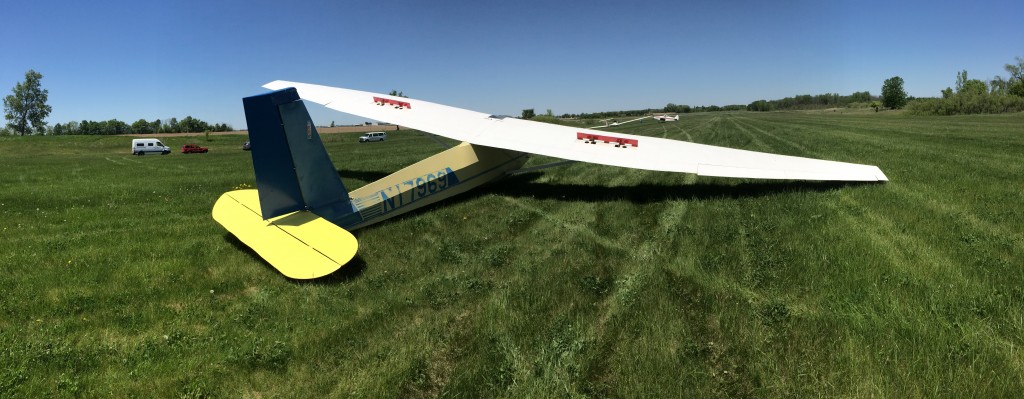
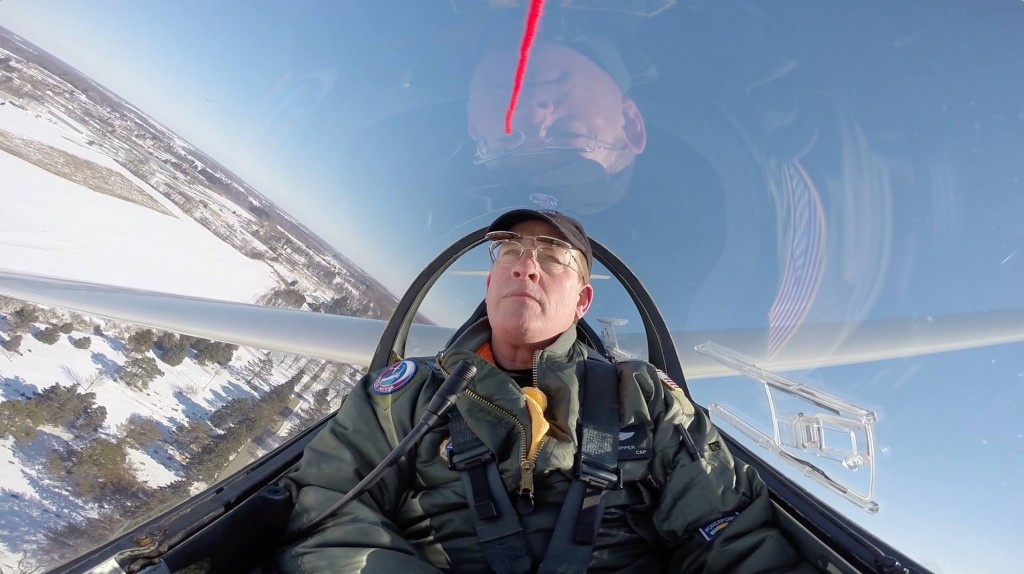
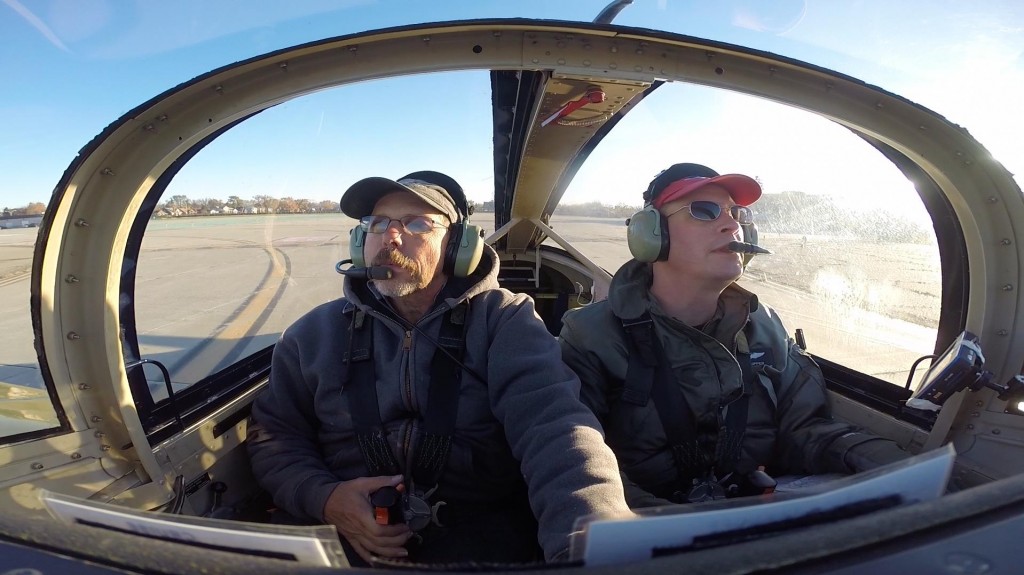
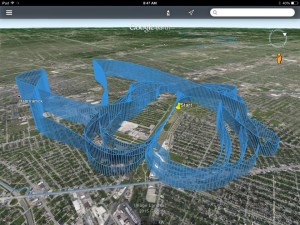
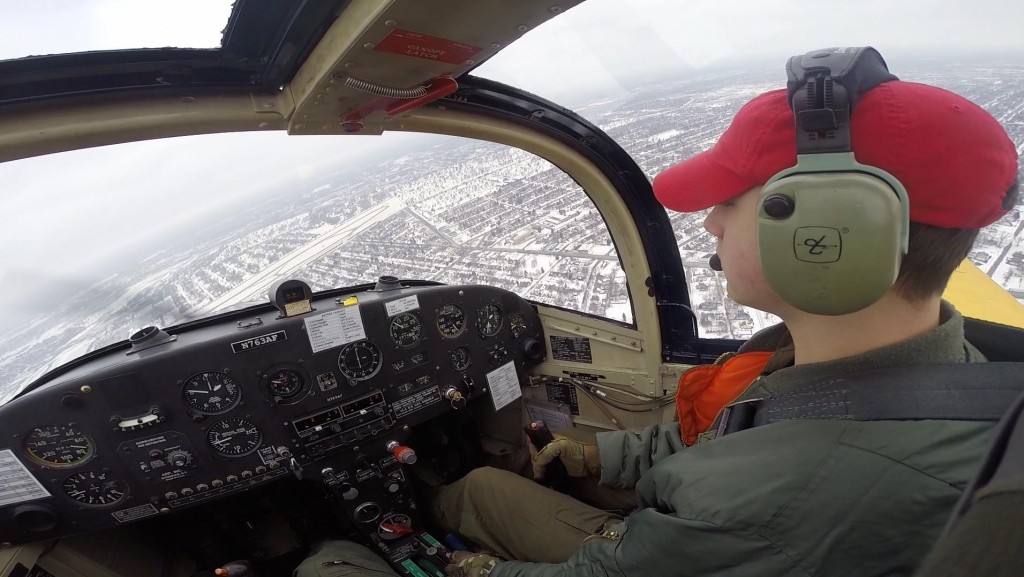
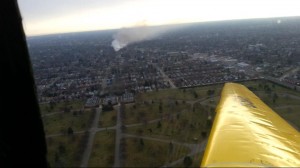
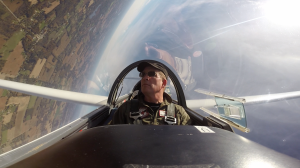
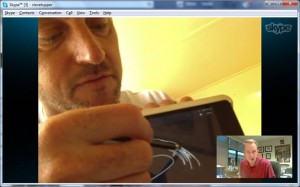
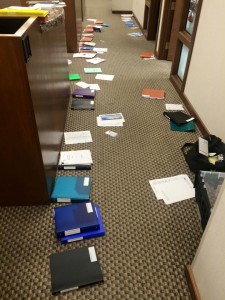
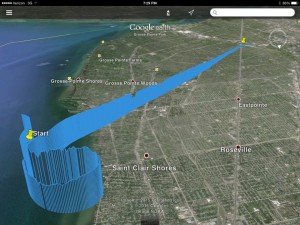
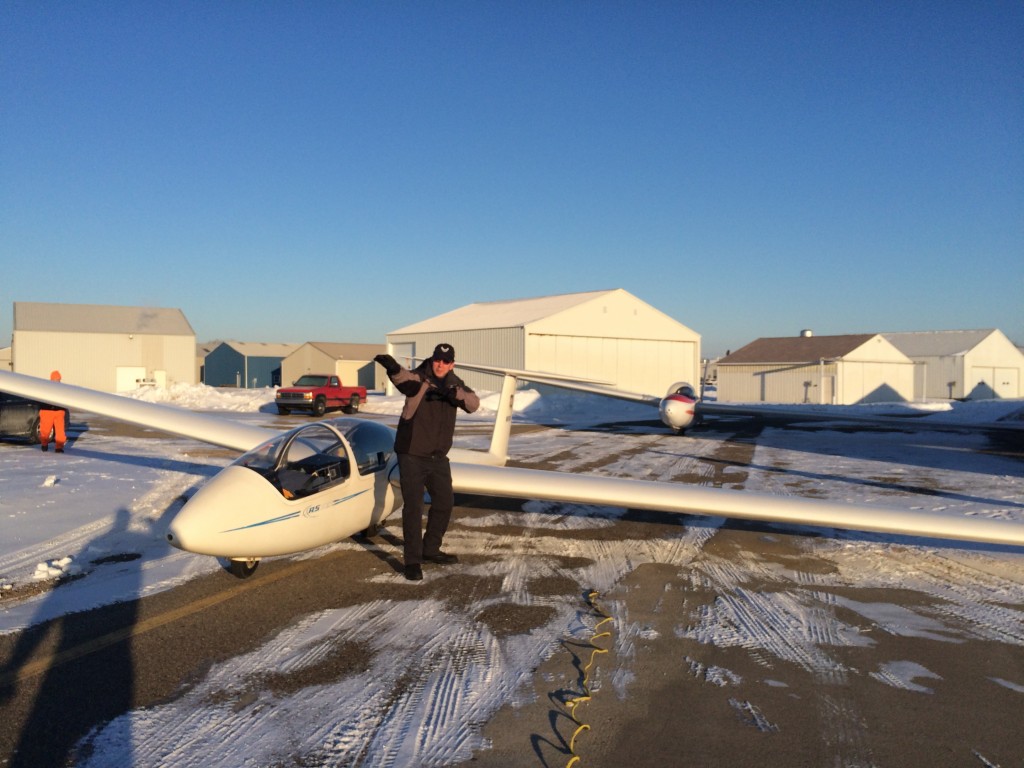
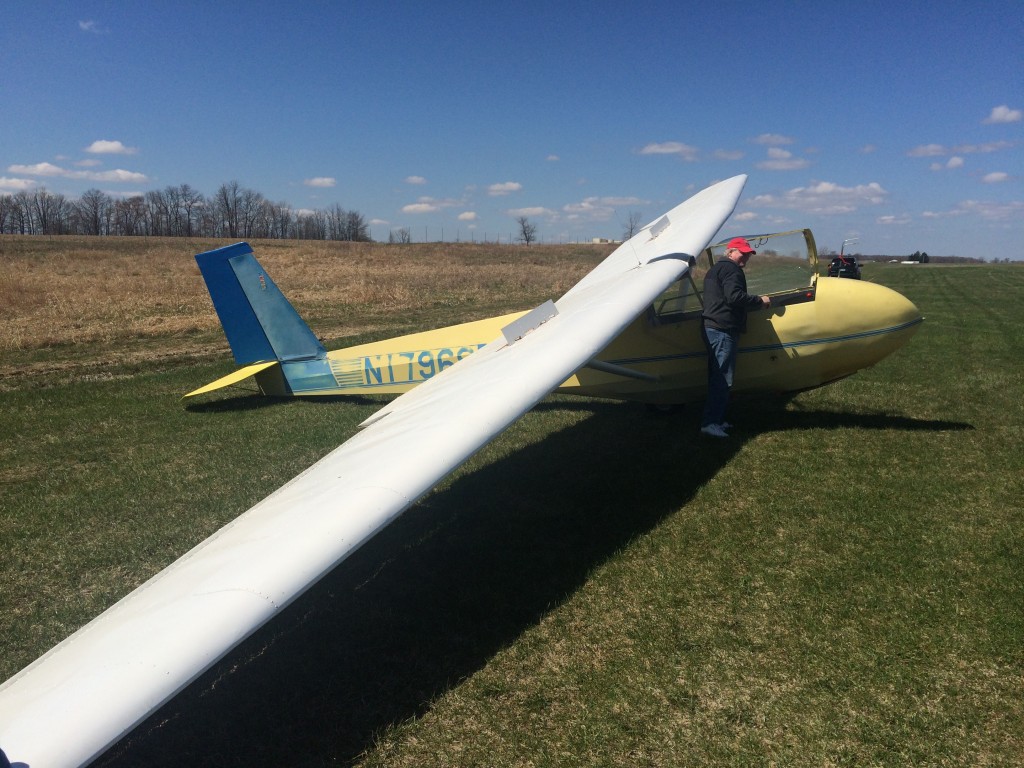
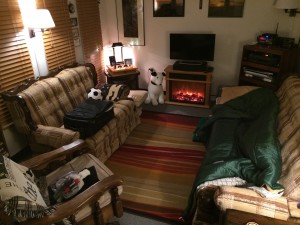
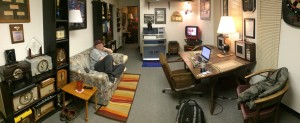
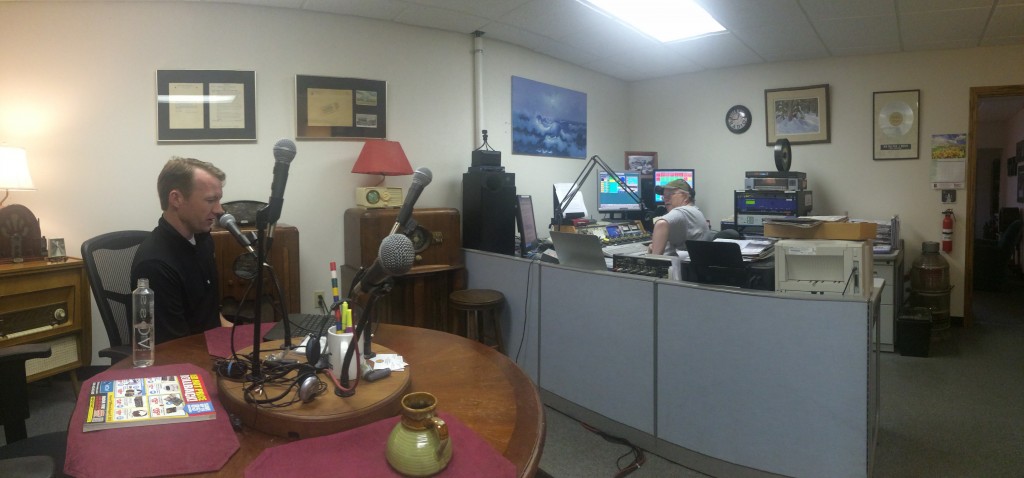
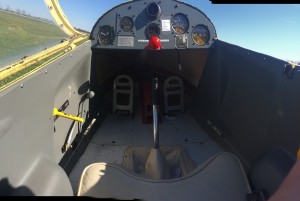
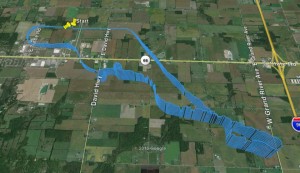
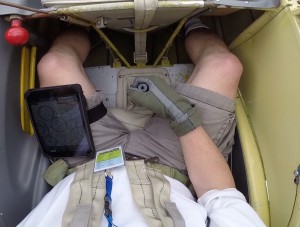
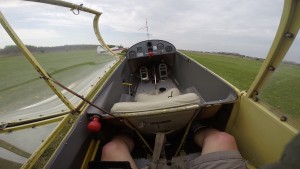
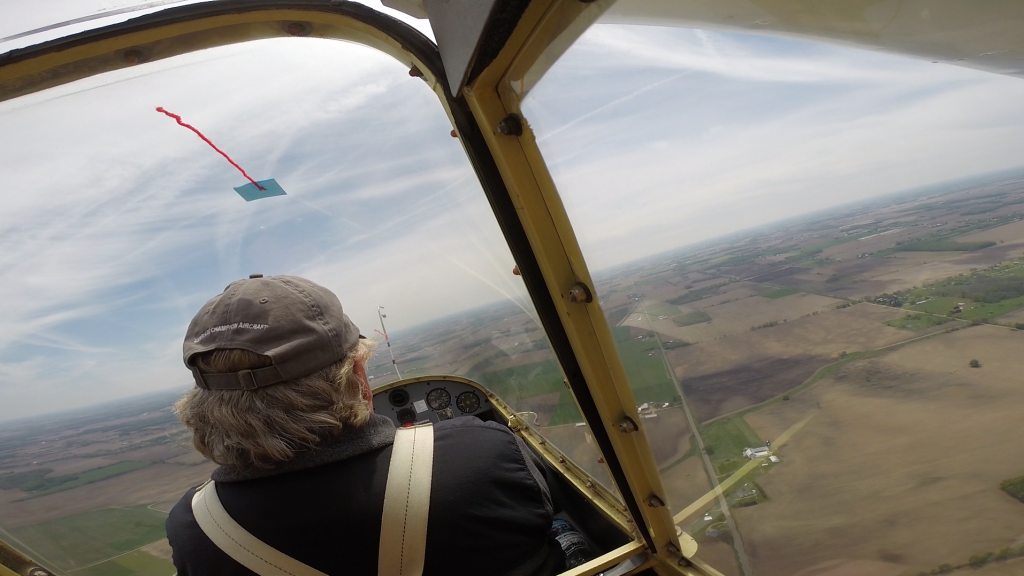
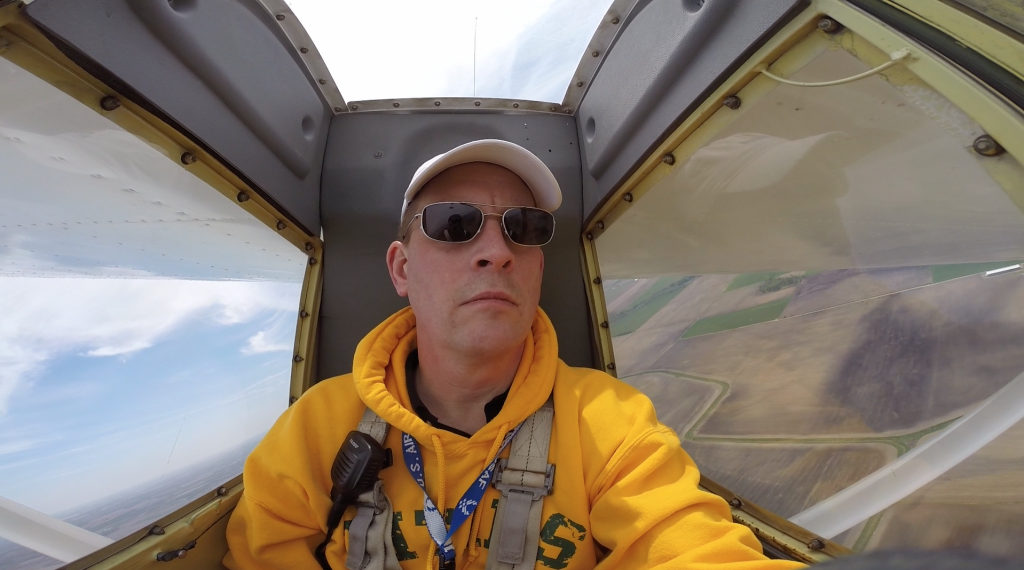
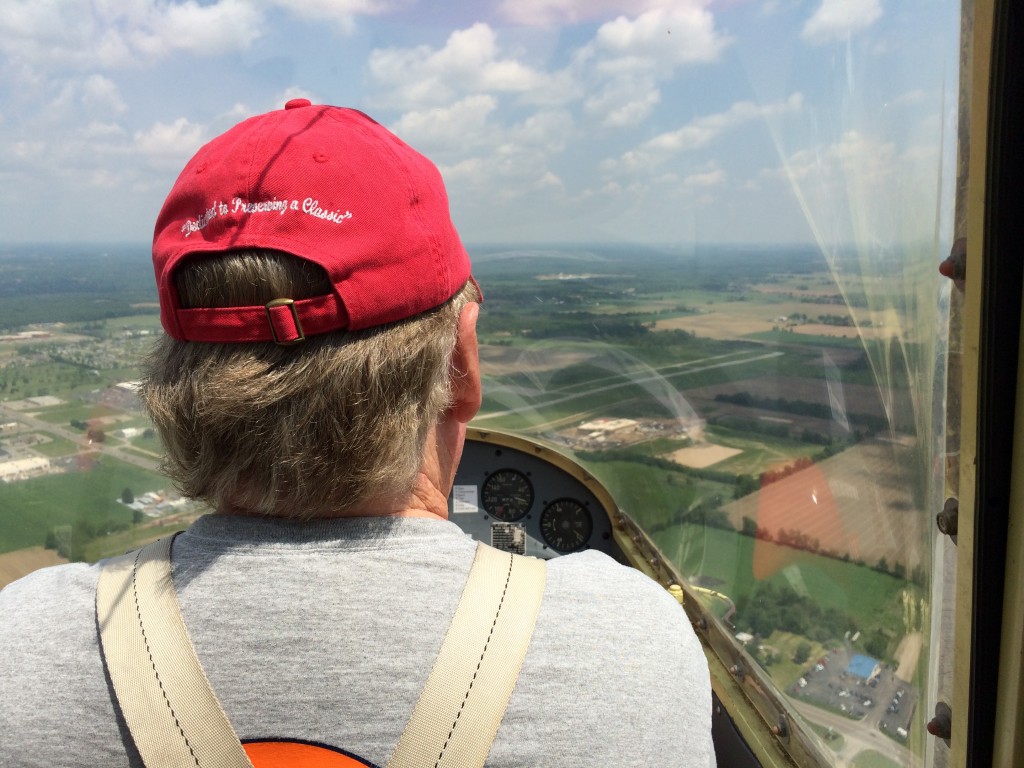
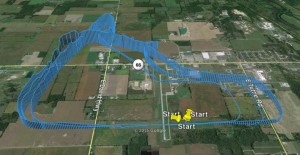
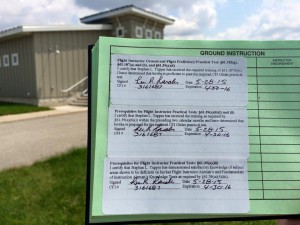
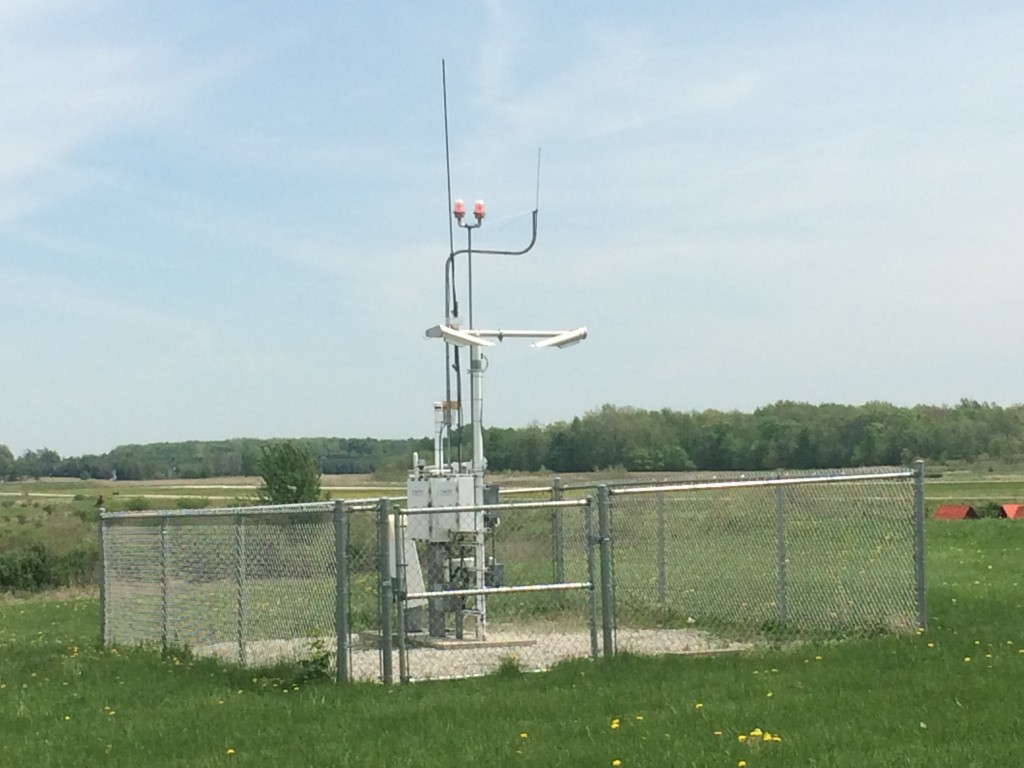

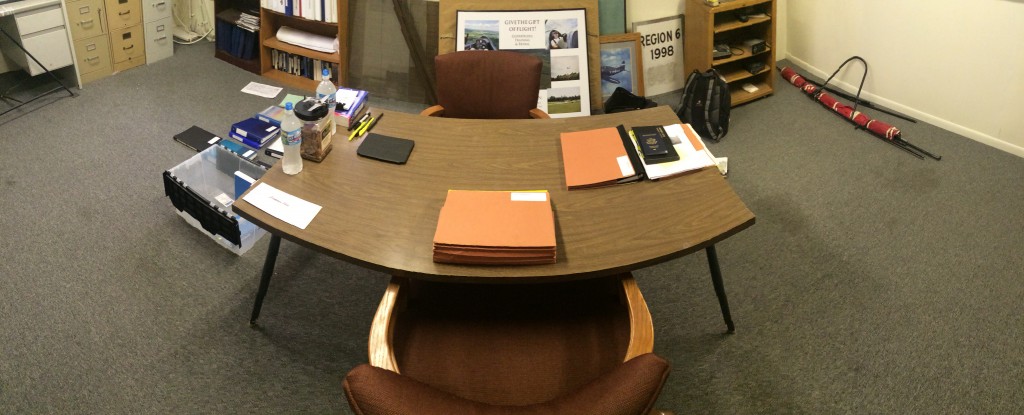
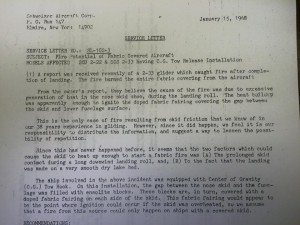
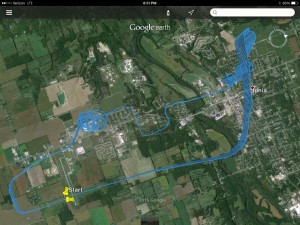

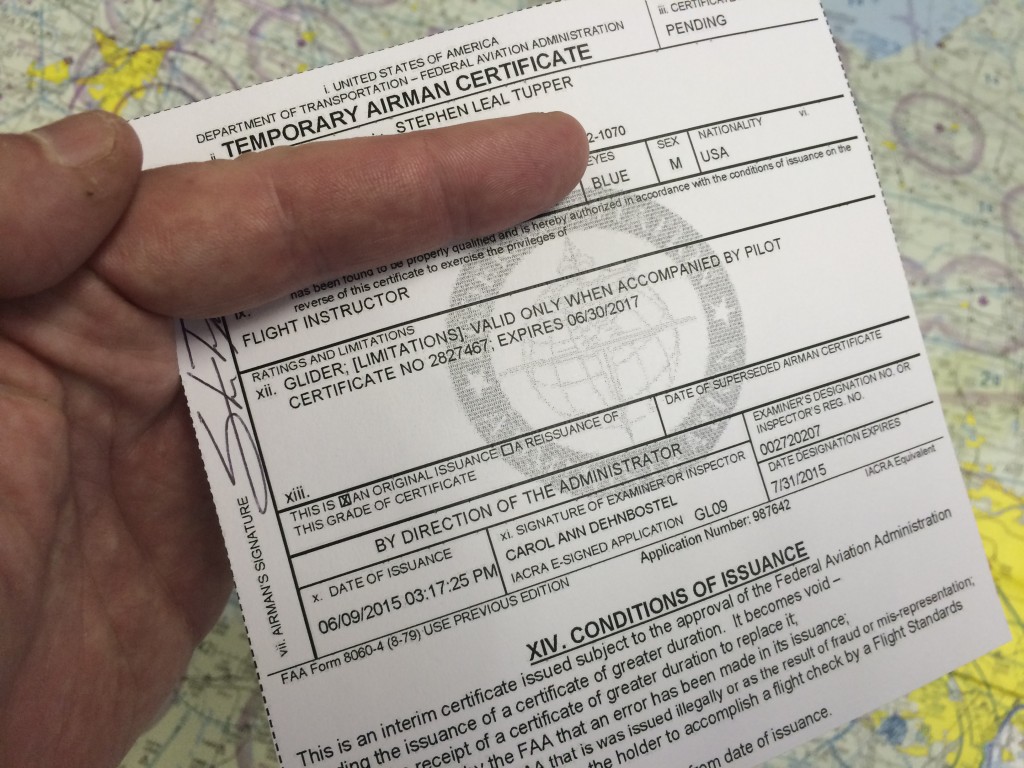
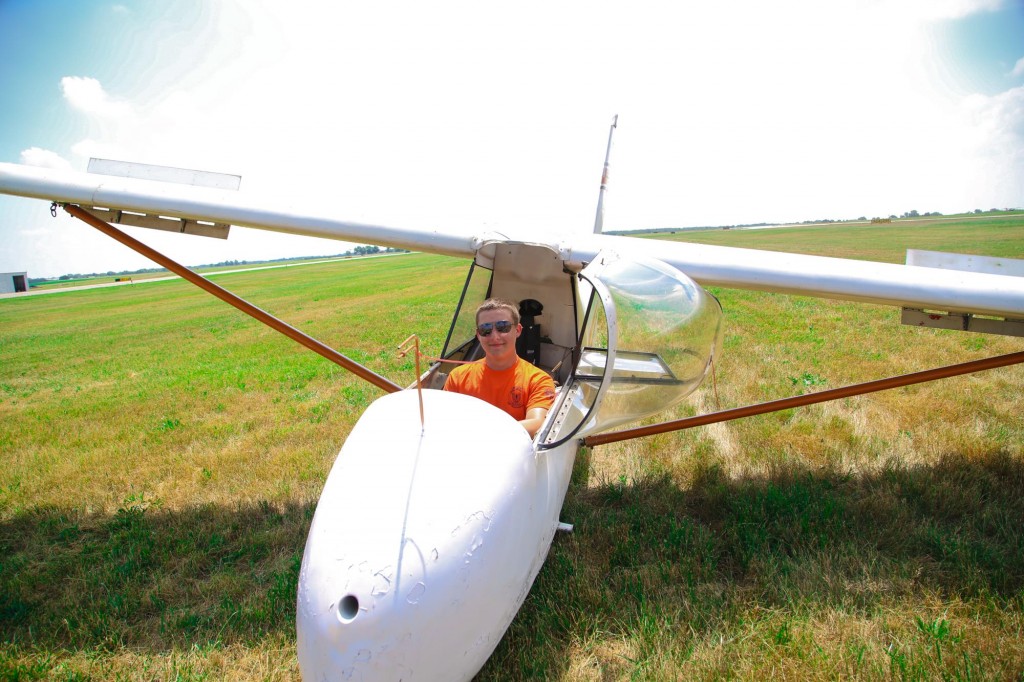
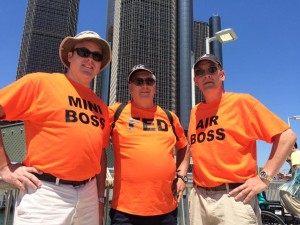
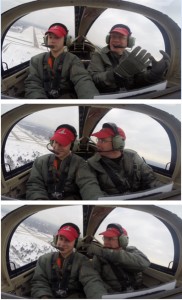

Thanks, Steve. I enjoyed reading through your long journey. I appreciate you taking the time to write it all down.. Well done! Not many people have a passion that drives them, and even fewer have the ability to communicate that passion. You excel at both.